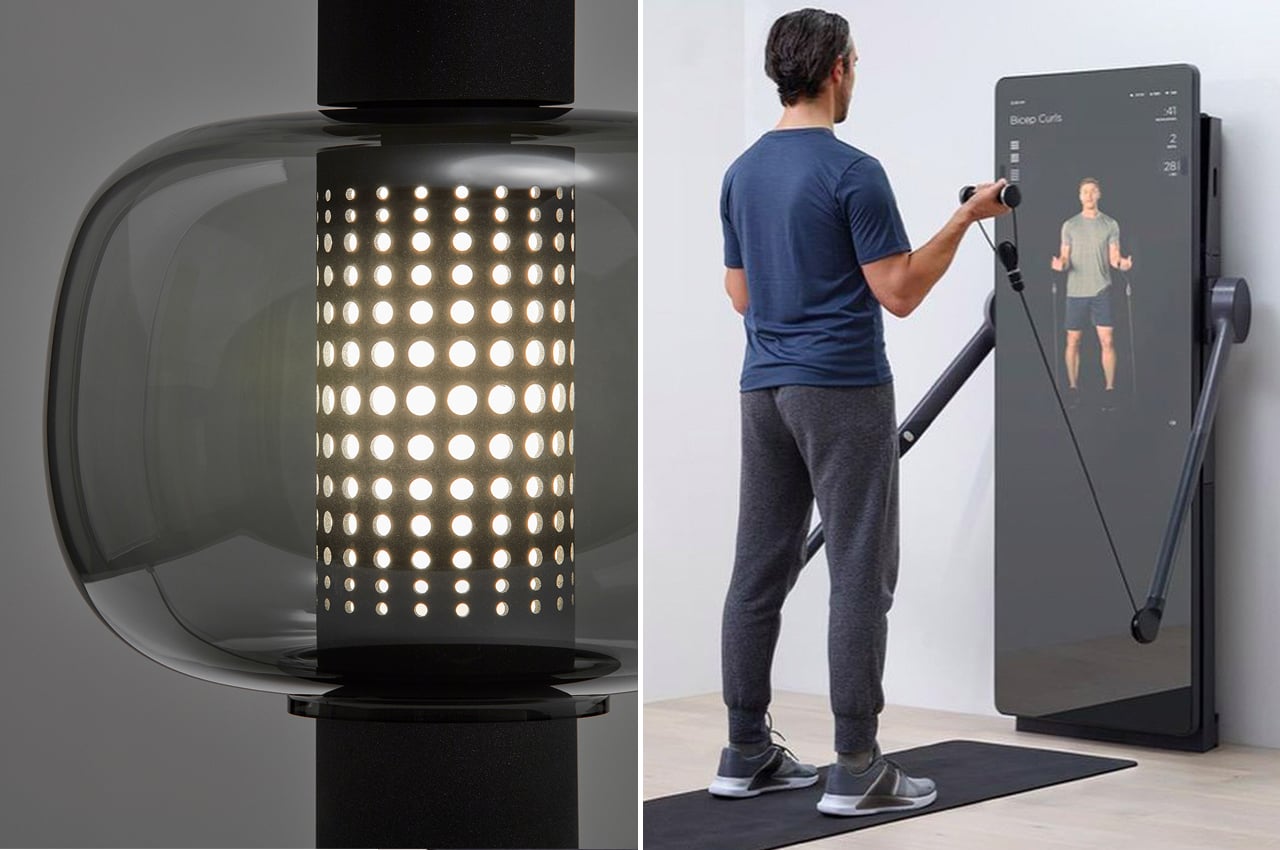
Here’s a recent factoid that sits rent-free in my head. In the UK, there are more CEOs named Peter than there are women CEOs. Sounds absurd, doesn’t it? What’s disturbingly hilarious is that this isn’t even a gender comparison, it’s an entire gender versus an aggregate of guys called Peter. Sadly enough, that strange disparity doesn’t exist within the executive domain or within entrepreneurship alone, but also is rampant within the creative industry. However, here’s what’s even more surprising about the creative industry… women make up over 60% of students studying creative arts and design at the university level, but beyond college, the world of product and industrial design is anywhere between 78 and 95% male.
We shared these details in an Instagram post roughly a year back, with responses that shocked and wowed us. The viral post raised awareness on the experiences of women in industrial design, and also the amount of appreciation, recognition, and exposure they truly deserve but do not always receive. In an ode to amazing female designers and the mindblowing work they do, together with our guest post author Kristi Bartlett, we’ve curated a collection of 14 women industrial designers and their innovative product designs. Scroll on to meet them and learn from their answers to 2 questions that give us their outlook on the design world. From tech to furniture to architecture, there’s no design industry left untouched by women and their creative enigma! It’s a women’s world, and it’s time we celebrate it!
Fumi Shibata
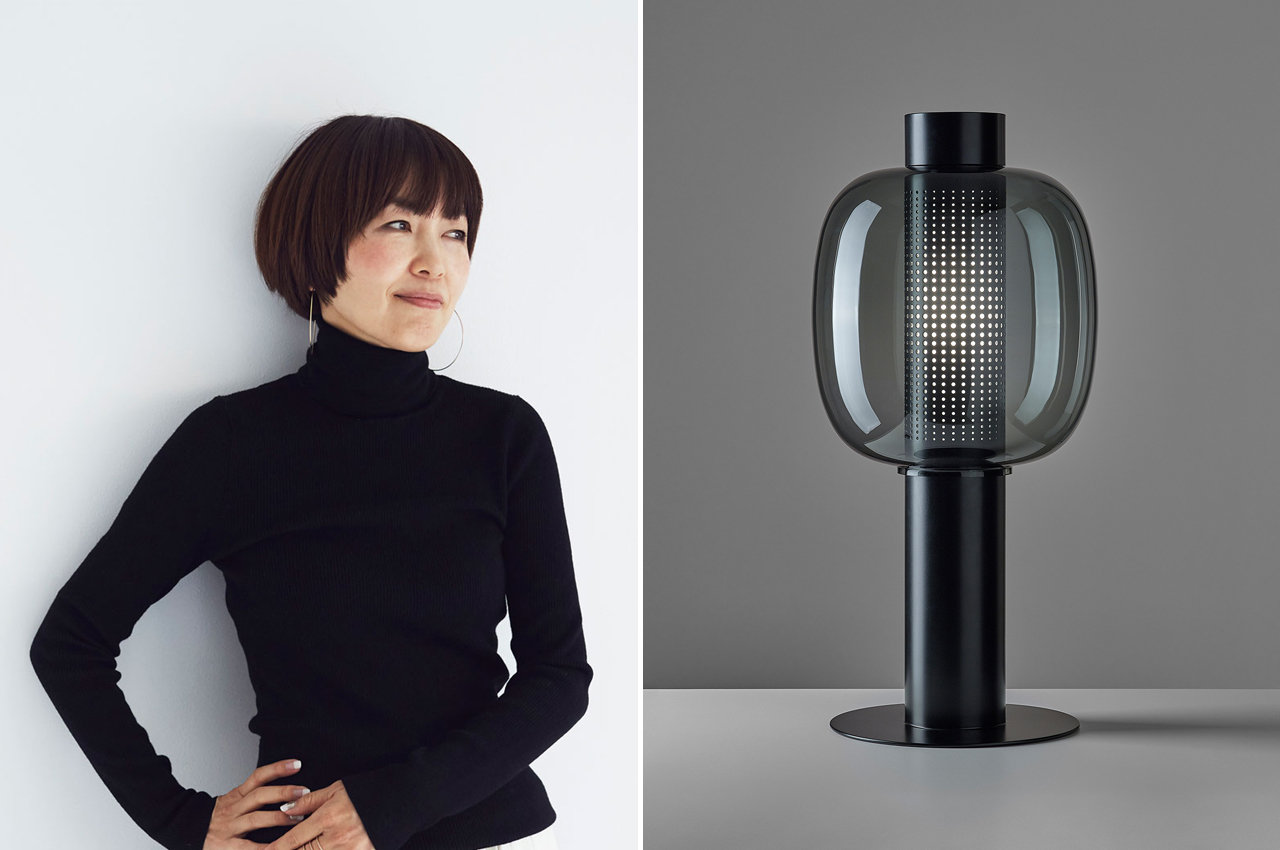
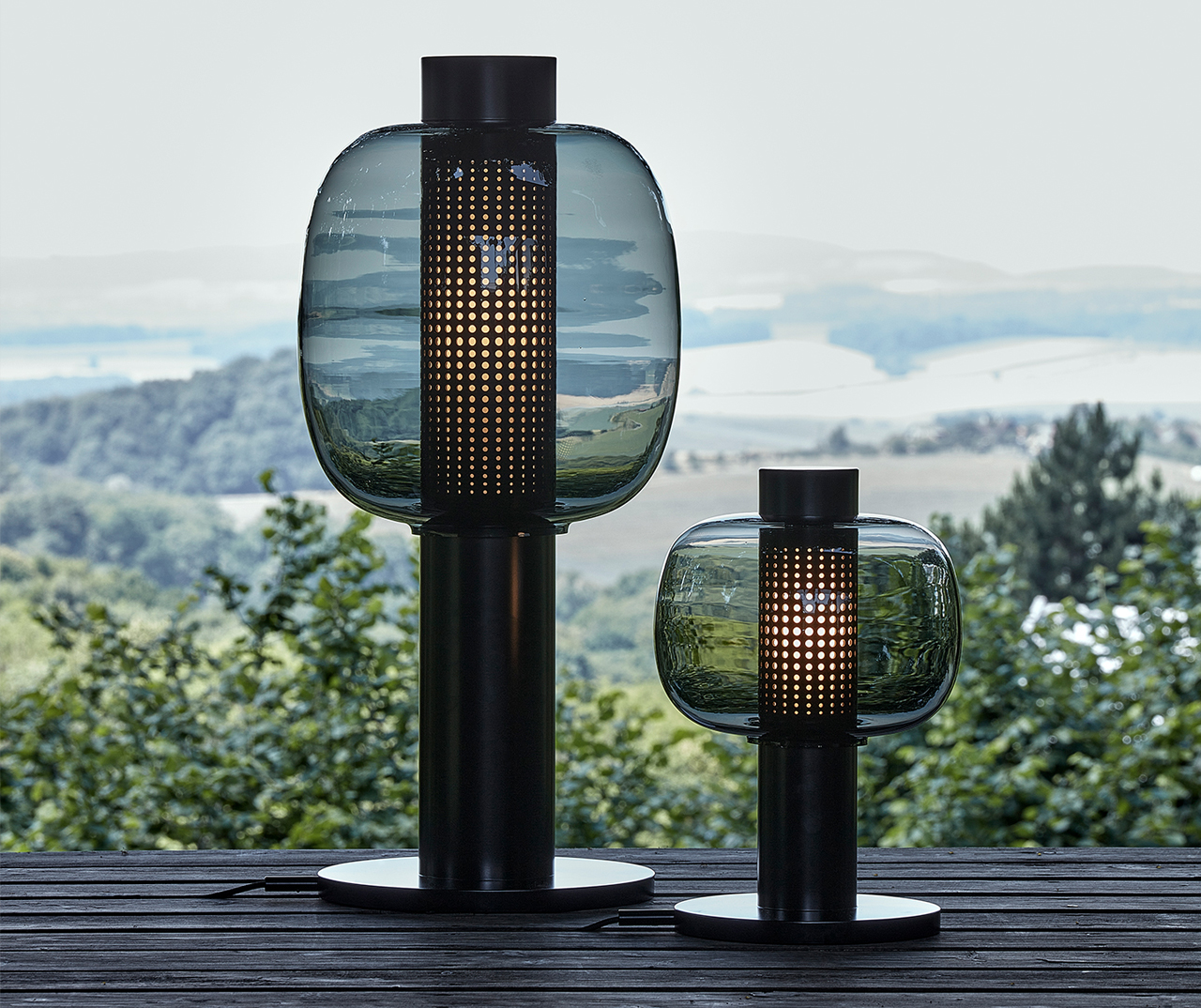
Japanese designer Fumie Shibata (follow her on Instagram to get a glimpse of her work life!) is the founder of the Design Studio S. Her experience spans a range, right from electronics, medical equipment, housewares, to even doing the creative direction for a capsule hotel. Her past clients include the legendary minimal Japanese international brands like Muji and Zojirushi. Her portfolio showcases the awards she has won – the iF Gold Award, and the Design for Asia Top, Culture, and Gold Awards among others. She works as the Professor of Musashino Art University and is a part of the Judging Committee Chair of the 2018-2019 Good Design Awards. She has also authored the book ‘Forms within Forms.’ Her latest work, the Bonbori collection is hypnotic lighting that uses a minimal dot pattern to create an interesting gradient in this lamp. The design also won the Elle Deco International Design Awards for 2021.
What is your design philosophy and how is it reflected in your work?
I would like to create a variety of options without being bound by existing values. For example, I believe that the 9h (capsule hotel) I designed has created a new style of accommodation.
Is there a social issue you hope to design can help solve?
As a person involved in manufacturing, I am always thinking about what I can do to address environmental issues.
Qin Li
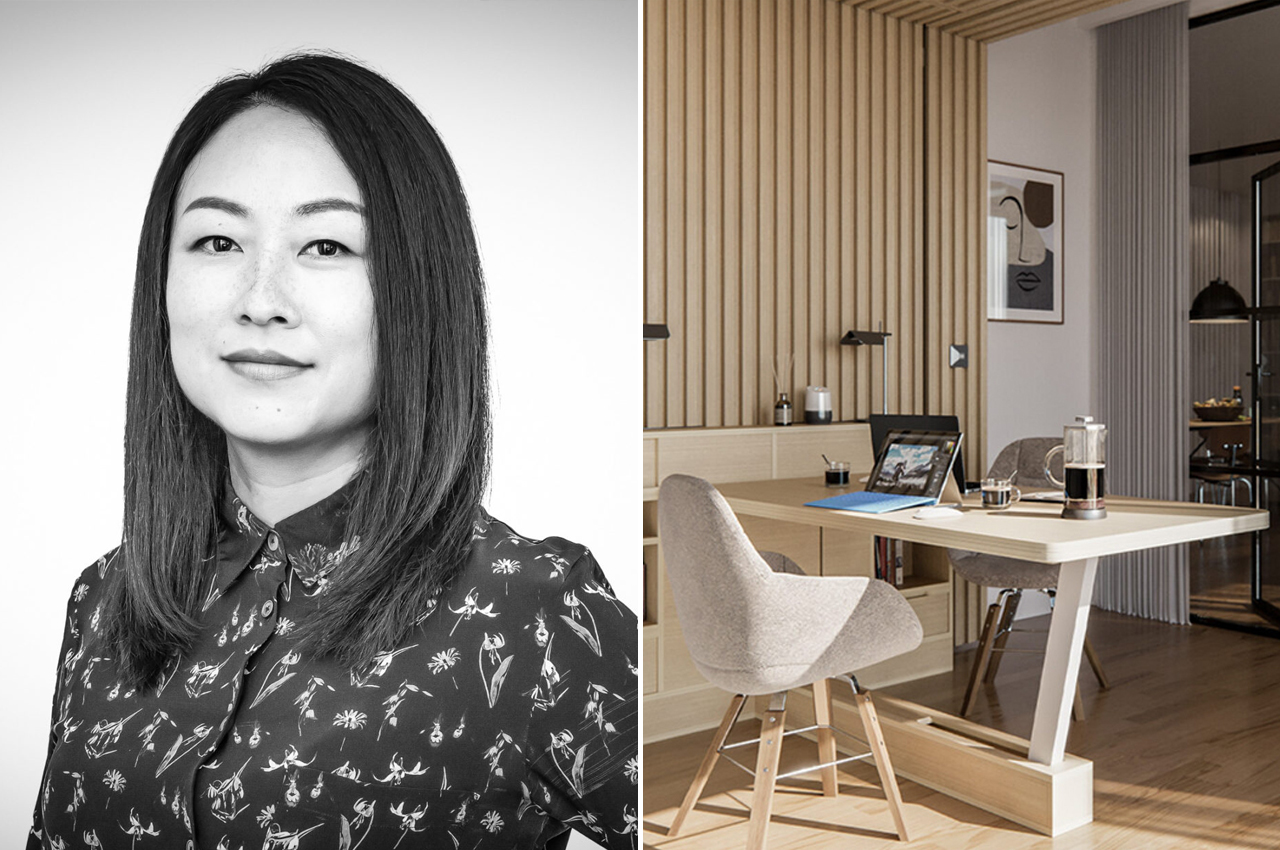
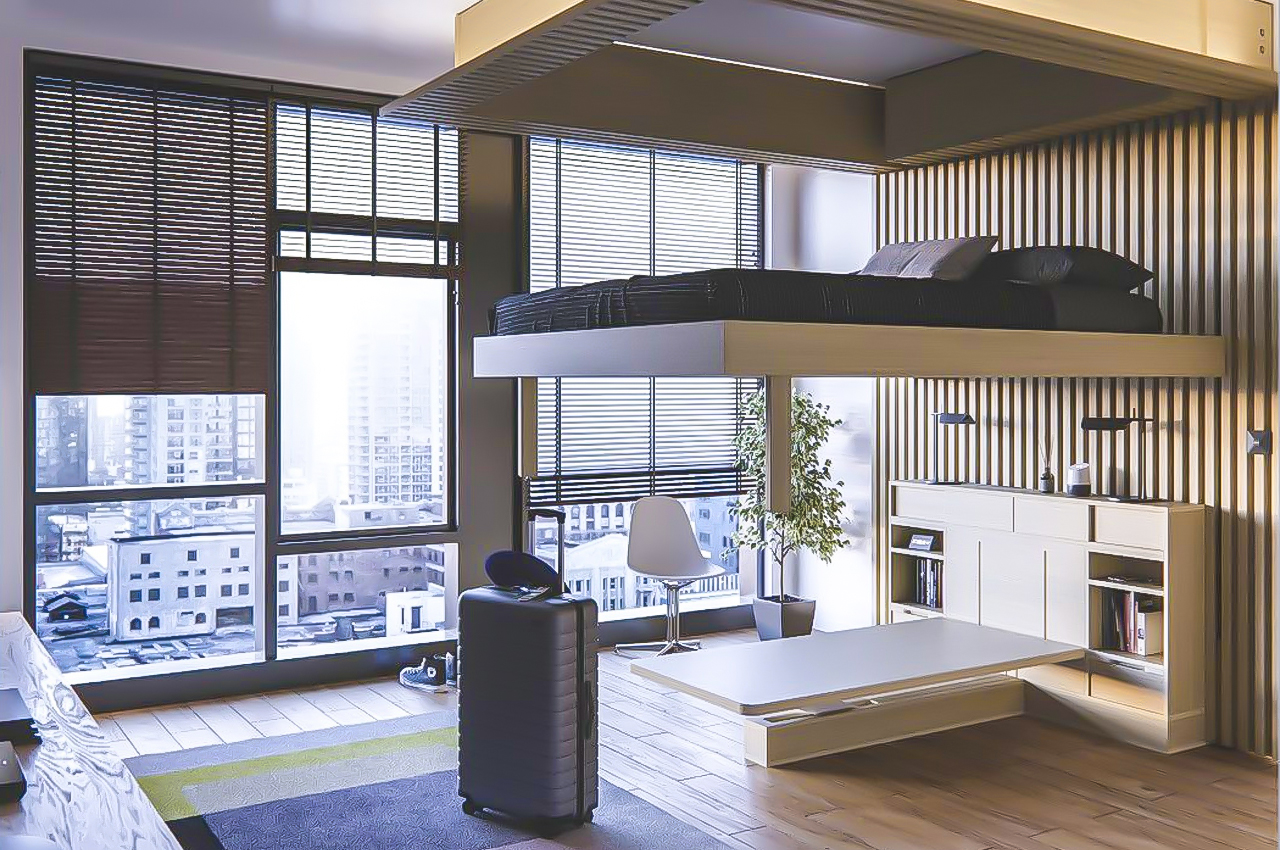
Qin Li is the Vice President of Design at fuseproject, and has over 20 years of experience and knowledge of the industry – which is why she guides the entire design process from ideation to production. She is also the Chair Emeritus of the Board of IDSA (Industrial Designers Society of America) and has served as a juror in multiple design competitions. Her Instagram is a collage of her work and personal life with interesting architectural shots making up the mix. Showcased here is one Ori Living, one of her ‘TIME Magazine 100 Best Inventions of 2020’ winning designs. The Ori Cloud Bed was designed to be integrated into smaller living spaces to make the most out of the space we have for working from home.
What is your design philosophy and how is it reflected in your work?
More than ever, I am feeling the increasing responsibility as a designer – reimagining the post-pandemic human experience, and being active stewards of the environment. I’ll always have a passion for uncovering new opportunities in the design process. A concerted effort in unpacking challenges allows us to deep dive into understanding user needs – on a physical, emotional, and cultural level – to deliver a streamlined, elegant, and human-centered solution. It is also a natural segue into pushing for true accessibility and universal design. A paradigm shift is needed to carve a path for this profession that prioritizes fundamental human needs over profit and consumerism.
Is there a social issue that you hope design can help solve?
We’ve seen California skies turn dark orange for days on end, entire glaciers disappear, and unprecedented drought and flooding all over the globe. The need for a serious and collective response to global warming is immediate and critical. As designers, we understand the depths of this systemic issue in our industry. Only a clear and deliberate charter spearheaded by the design community will change the attitudes, behaviors, and necessary legislature to address the climate crisis. Designers need to lead the charge in imploring clients to choose sustainable solutions and helping them understand this as both an opportunity and a necessity for the future health of our earth.
Ti Chang
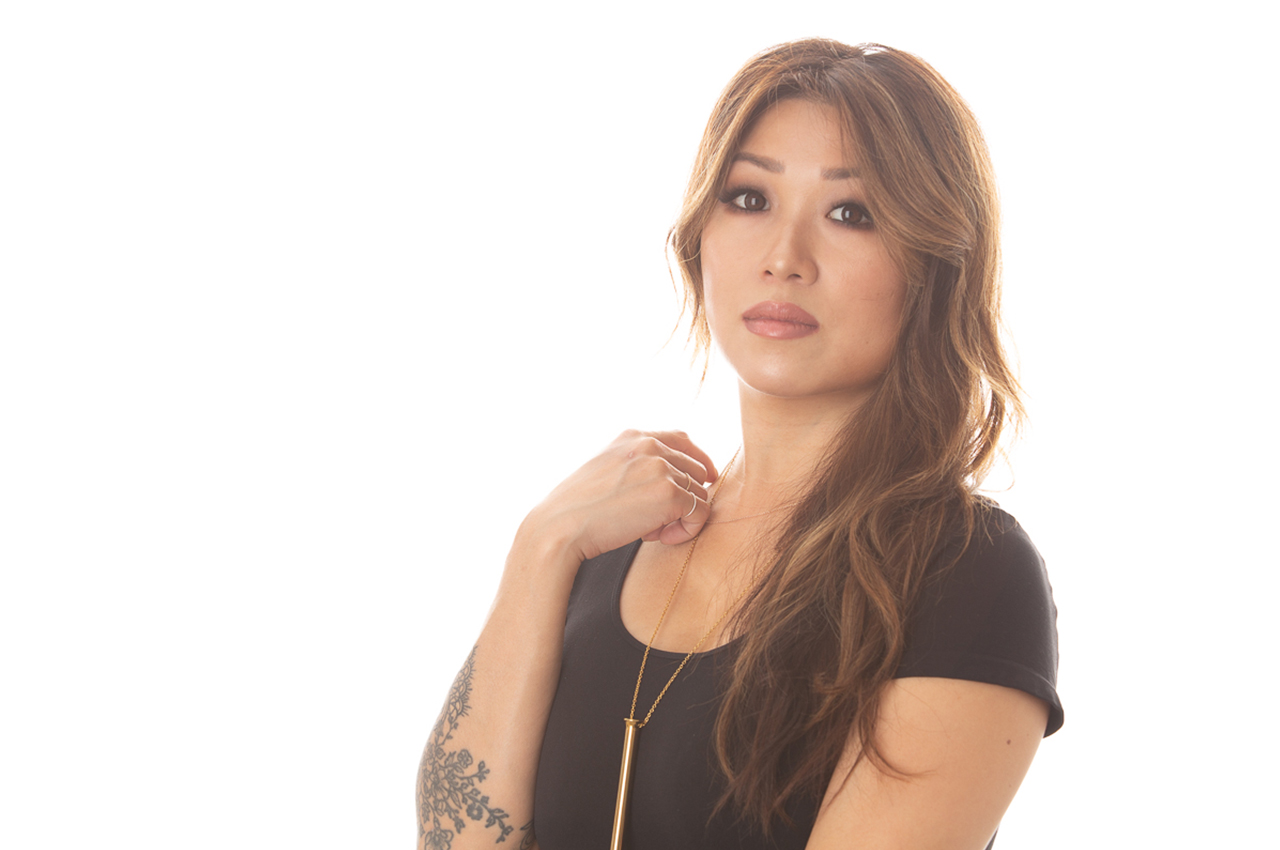
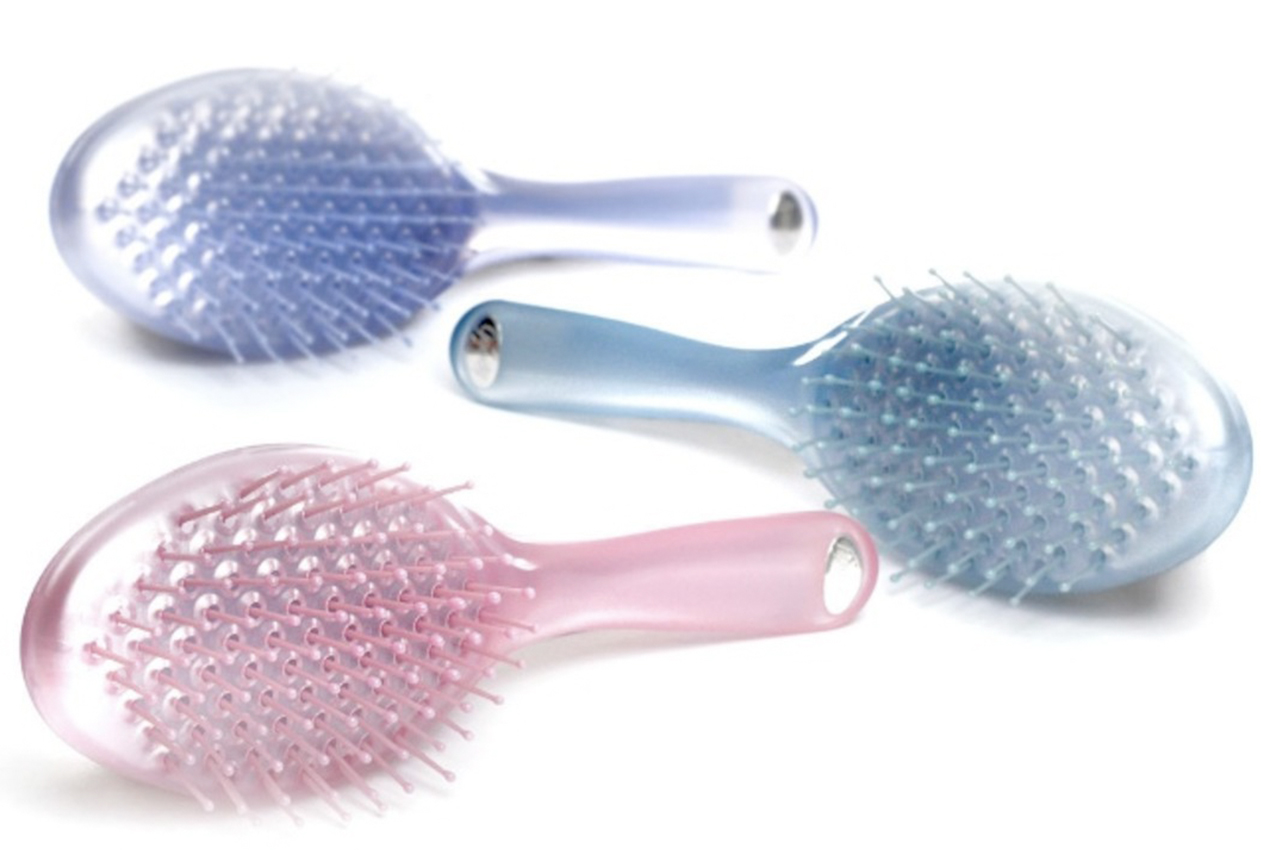
Ti Chang is a feminist industrial designer and entrepreneur who is the co-founder and VP of Design at Crave, a female pleasure company. With international design awards in her portfolio, she has led her company to have partnerships with Nordstrom, MoMA Design Store, Standard Hotel, Goop, and Saint Laurent. Ti describes herself as a feminist industrial designer and an unlikely activist and is passionate about her cause of getting women an equal consideration in the field of design. Follow her on Instagram to understand more about design activism. We have here the “Ouchless” hairbrush collection, a prolific product for nearly a decade designed during Ti’s time at Goody. The invention addresses the core of design philosophy – using simple changes to solve an everyday problem, which explains why the design is such a hit.
What is your design philosophy and how is it reflected in your work?
Designs must have a reason to exist, and to me, design is at its finest when it is in service to humanity. Design is my activism — it is my opportunity to serve those who are underrepresented and underserved. Women have largely been ignored and pandered to in the design of products. I am most interested in improving experiences that are universal because in this divisive time, there’s also so much that unites us. I have worked on consumer products such as hairbrushes and currently, I’m working on pleasure – we could all use more joy and permission to embrace the pleasure our bodies are capable of.
Is there a social issue that you hope design can help solve?
Design can profoundly change people’s lives – and I’m particularly interested in how it can empower women on a daily basis. We just haven’t earnestly tried in the past to serve women in industrial design because often we assumed the experiences of men mapped to the entire humanity. We are only beginning to scratch the surface of what we are capable of achieving for empowerment of women. As I see more businesses embrace diversity and the emergence of women-led companies, I am hopeful that the lens of design will continue to evolve and be a force for a more equitable world.
Arielle Assouline-Lichten
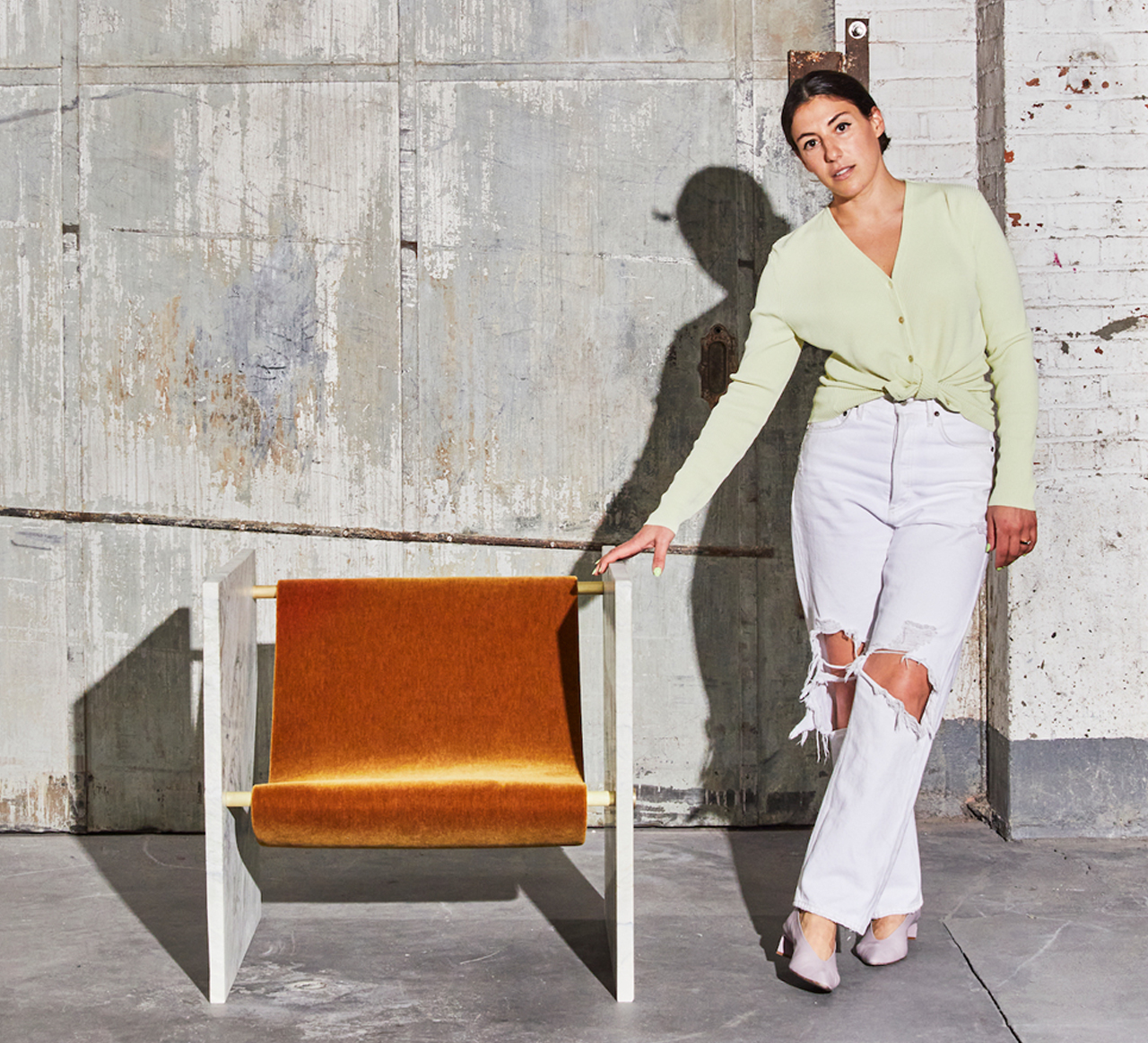
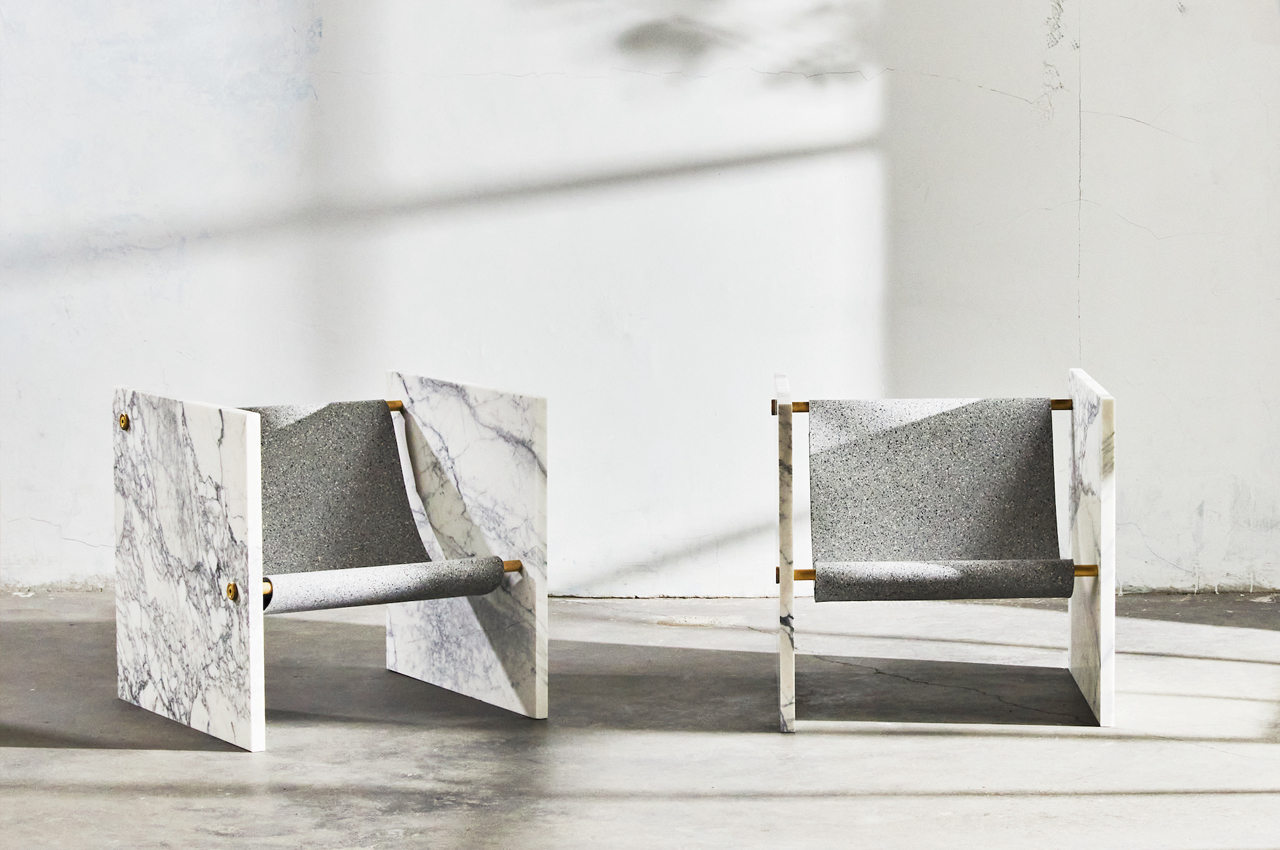
Arielle Assouline-Lichten is the founder of Slash Objects, a sustainability-minded design firm based in Brooklyn, NY. Arielle is passionate about design as a way to transform how humans experience the world. Her work aims to reframe our understanding of the resources we have through tactile stories that create a sense of intrigue into our material world. If you think you have seen her before, she’s the runner-up on Ellen’s Next Great Designer. Follow her on Instagram for some fun behind-the-scenes of her daily life. One of her latest pieces, the Adri Chair, is all about clean lines and is a renewed interpretation of a modernist experiment. Marble and recycled rubber were used to create this exquisite piece of furniture!
What is your design philosophy and how is it reflected in your work?
I am a minimalist with some maximalist tendencies – but I ultimately aim to highlight the beauty of materials. I’m interested in what we can do with the least amount possible, how we can pair things down to uncover new connections.
Is there a social issue you hope to design can help solve?
I think that representation is important in the creation of design – our canon of design pieces has historically been overrepresented by one type of creator. I’d like to see new authors create timeless pieces – that is something I am aiming for.
Veronika Scott
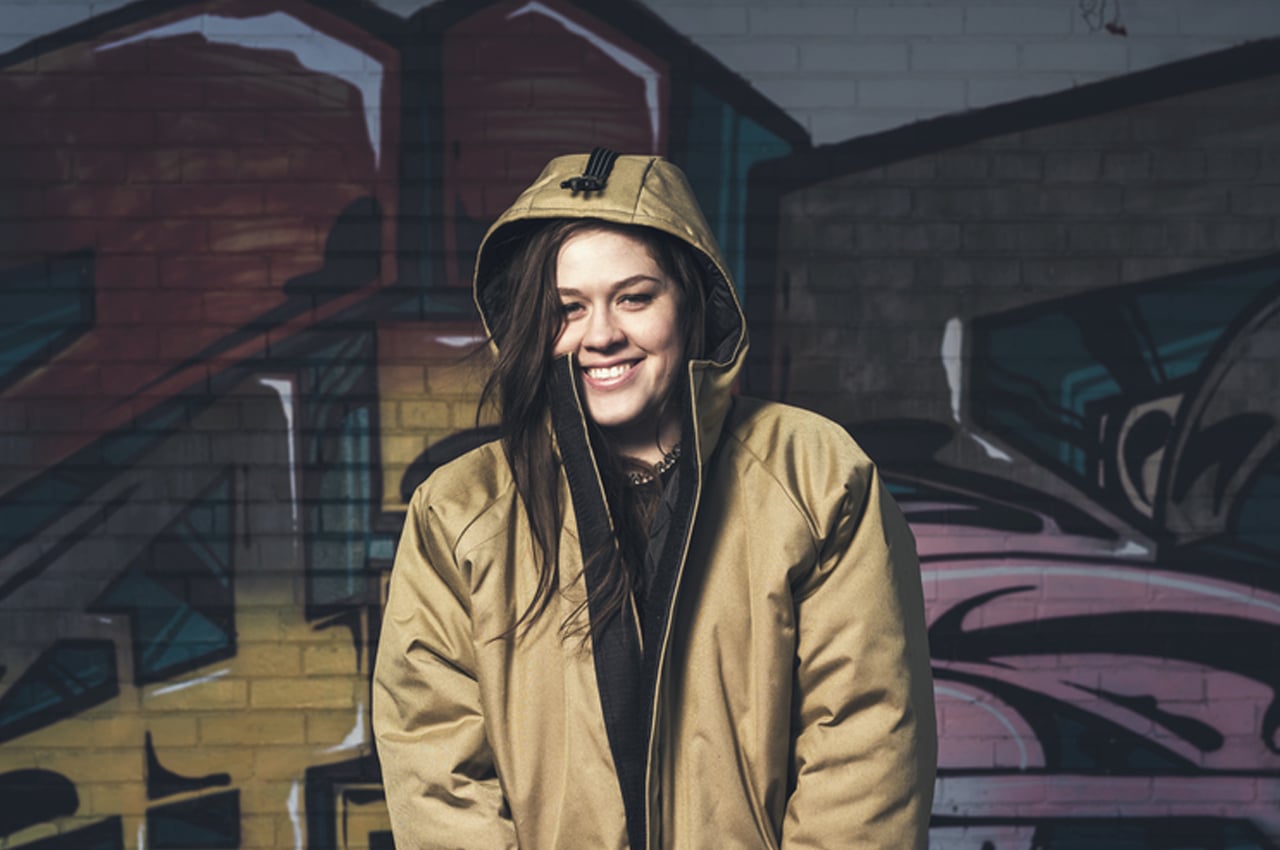
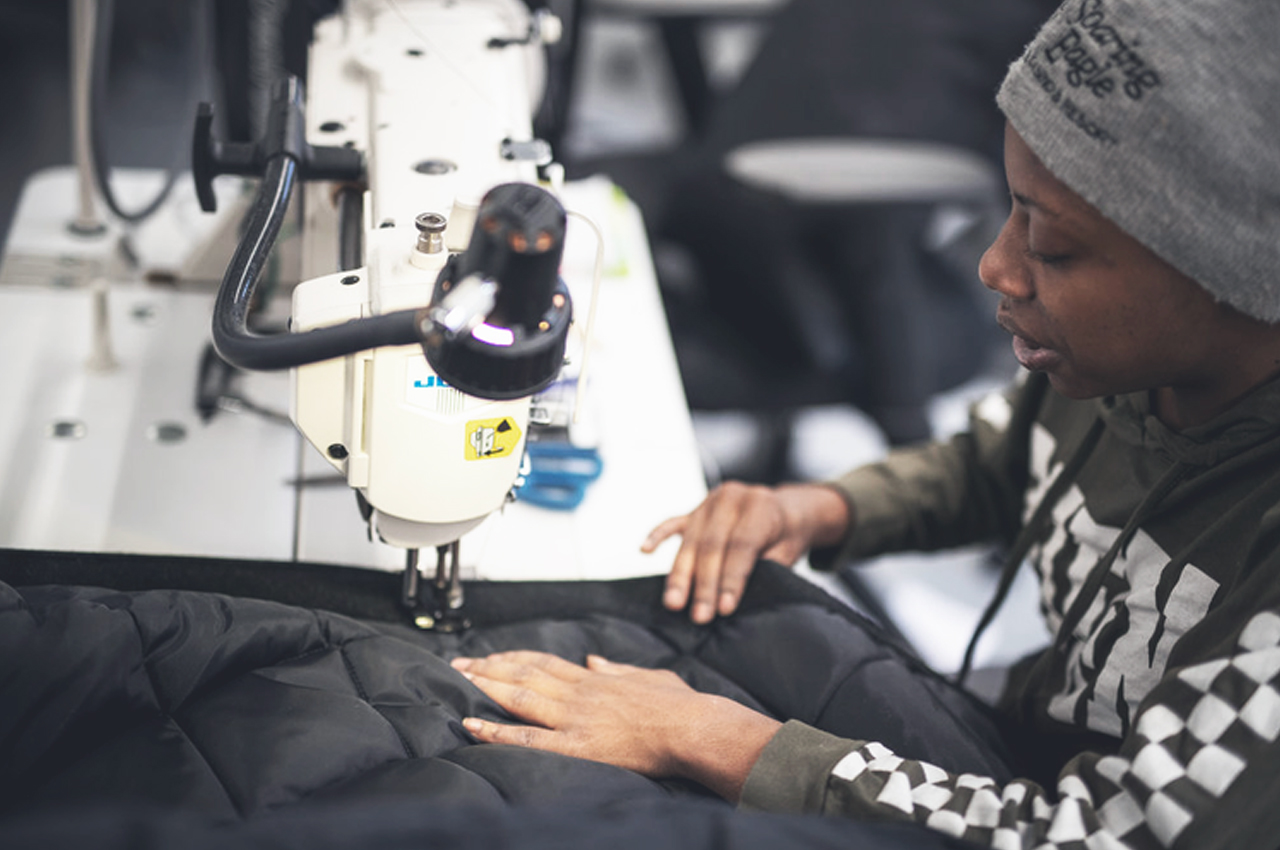
Industrial designer Veronika Scott is a social change entrepreneur and the founder of the Empowerment Plan, a Detroit-based non-profit breaking the cycle of homelessness through empowerment. What started out as her senior project is now a full program which provides jobs to people who need them. The workers make EMPWR coats, durable coats that can transform into sleeping bags or be worn as an over-the-shoulder bag, which are distributed to people experiencing homelessness. Her work embodies the principle ‘Give a man a fish and you feed him for a day. Teach a man to fish and you feed him for a lifetime.’ Veronika’s organization gives the ones in need a lifeline, a chance to make the world better and that’s what can change their life. Follow her on Instagram to see the impact of her work.
What is your design philosophy and how is it reflected in your work?
My design philosophy is centered around constant evolution to meet the needs as they change over time and that really goes hand in hand with listening. Truly listening, not just for the answer you want to hear but letting people drive the growth of the work. We are constantly getting feedback on the coats we make as well as the job opportunities we create. We aim to make people feel heard in the process. No issue or challenge is stagnant, things change, and we need to keep up.
Is there a social issue that you hope design can help solve?
I wish some of the incredible design minds that I know are out there could solve the childcare issue. We have such a challenge with this as a country and in this last year, we have truly felt the impact of poor childcare, on the whole family and in particular women. I think that designers could take on this complex social issue and come up with some beautiful solutions.
Matali Crasset
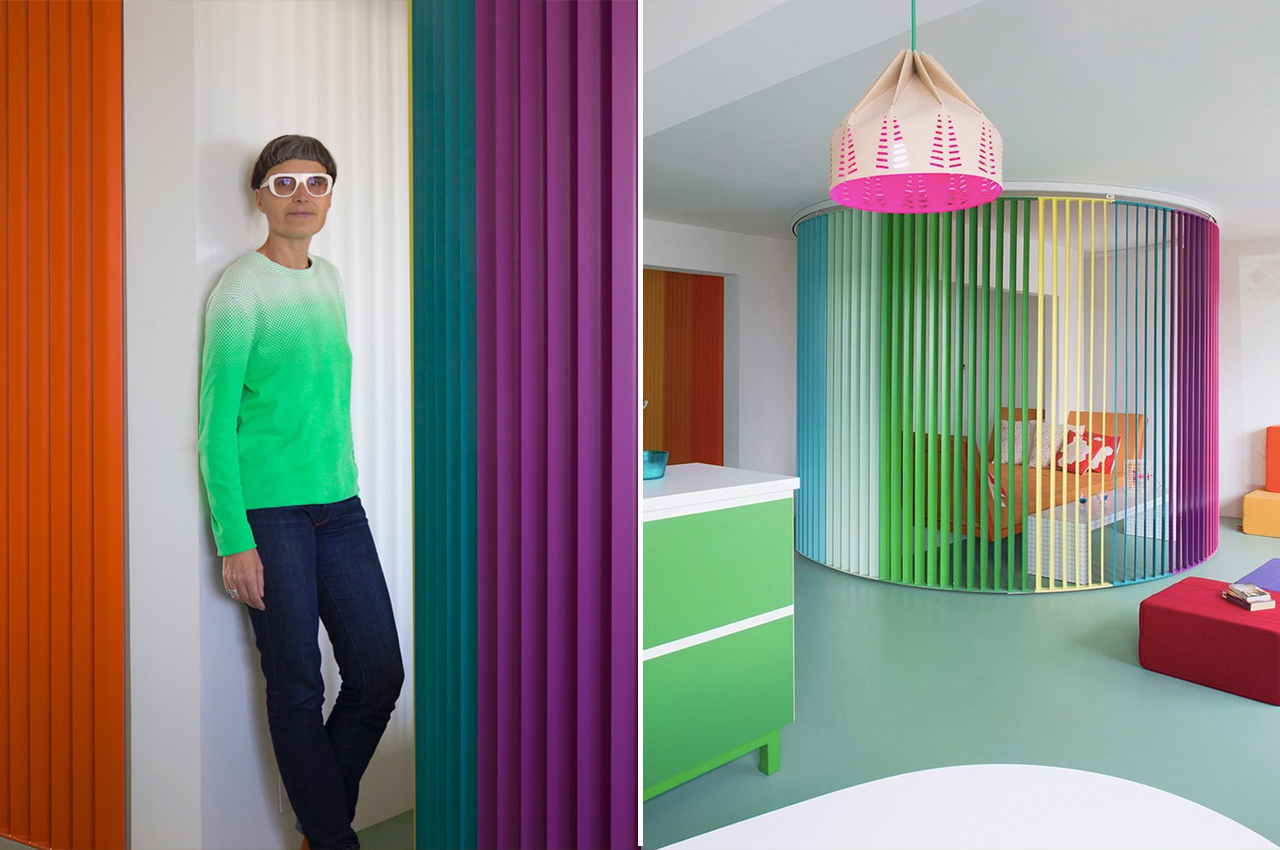
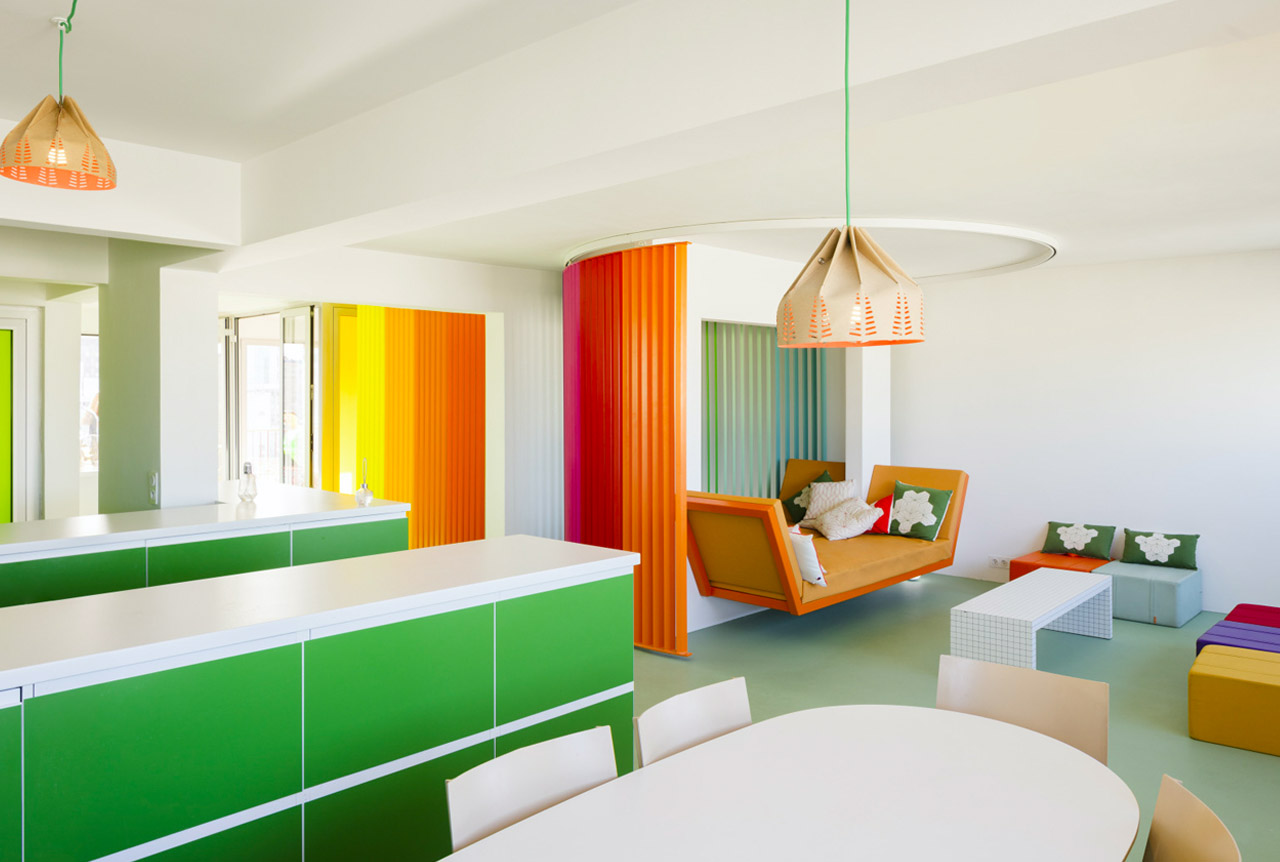
Matali Crasset’s experience shows the trends of Industrial Design, and you can see her personal style on her Instagram. Graduated at Les Ateliers Ecole Nationale Supérieure de Création Industrielle, Matali Crasset is an industrial designer of formation. She collaborates with eclectic universes, with work ranging from handicraft to electronic music, from the scenography to the furniture, from graphic design to interior architecture. The work here showcases the renovated Michèle Monroy’s apartment in Paris. Matali showered it with colorful hues of orange, yellow, pink, blue, and green – this ecstatic rainbow-themed space is designed to instantly lift up spirits.
What is your design philosophy and how is it reflected in your work?
I see this profession more and more, through the projects I lead, such as that of a midwife. It is less and less a question of shaping matter – aesthetics – but rather of bringing out, federating, organizing, around common intentions and values, links and networks of skills, connivance as well as sociality.
Is there a social issue that you hope design can help solve?
A designer is not a problem solver. I defend design as an artistic, anthropological, and social practice ever since graduating from the ENSCI-Les Ateliers. I strive for its dedication to creativity, people, and everyday life: how can design contribute to our community and help us navigate the contemporary world? This is the simple yet engaging premise, from which I think and set anything in motion.
Jasmine Burton
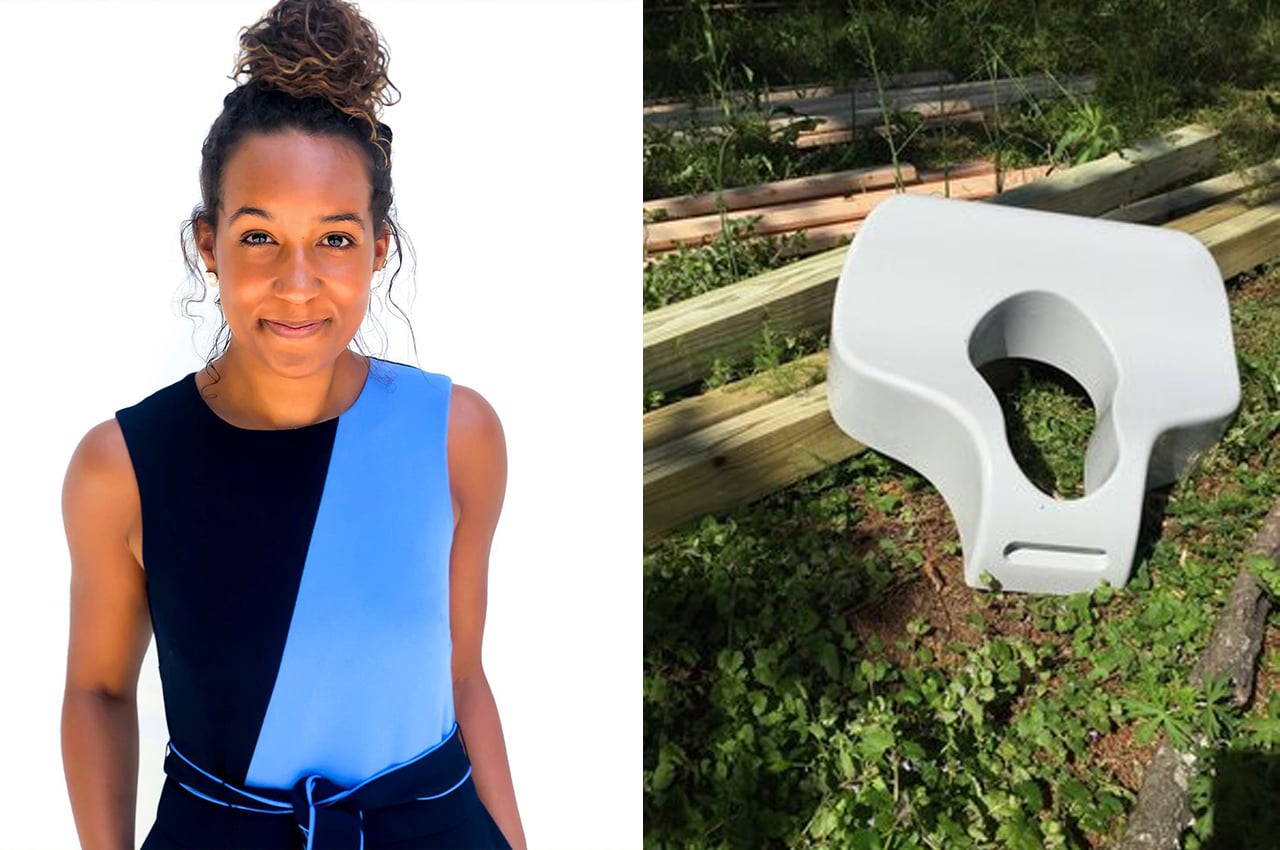
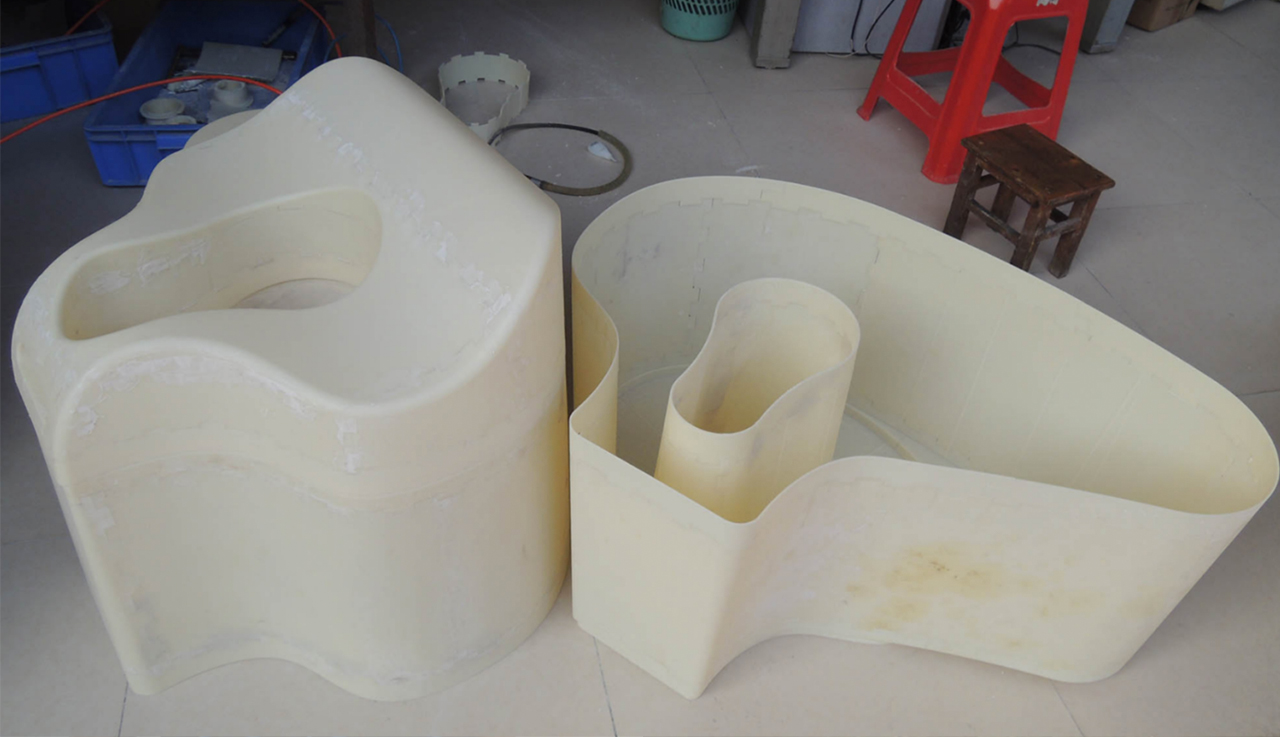
Meet Jasmine Burton – a powerhouse designer who has spoken at 130+ global stages – including a TedxAtlanta, Women Deliver Power Stage Speaker – and has also been featured on 50+ media platforms including CNN Money, Inc., WIRED, Fast Company, and WSBTV. She is the founder of Wish for WASH, a startup intended to innovate the field of sanitation. Post that, she started the Hybrid Hype, a woman-owned global consulting firm. Jasmine aims to use design thinking and business skills to improve access to health and sanitation for all. And she reinforces that ideology on her Instagram with the hashtag #everybodypoops aimed to normalize discussing sanitation. The design showcased here is the SafiChoo toilet – an inexpensive toilet frame that can be easily carried to any destination. The toilet also comes with a bucket system that allows for a safe and clean method of disposal.
What is your design philosophy and how is it reflected in your work?
“Design is inherently optimistic and that is its power” – William McDonough.
This quote rings true for me as I seek to use my product design skillsets and design thinking mindsets as generative, inclusive, and asset-based tools to help drive sustainable development particularly related to work rooted in health equity, gender parity, racial justice, and social inclusion. I firmly believe that design – especially human-centered design – has the power to change the world if used and proliferated intentionally. Across my ventures and vocations, we seek to design for dignity and ownership by designing ‘with’ not ‘for’ in the water, sanitation, and hygiene (WASH), menstruation, and global health sectors.
Is there a social issue that you hope design can help solve?
I identify as a hybrid professional who is passionate about using my design, public health, and business prowess to drive innovation in sanitation and gender equity through Wish for WASH and Period Futures. Over four billion people lack access to safely managed sanitation. Many communities share unimproved pit latrines or holes in the ground, which can be overflowing, poorly maintained, and/or far from home. The lack of toilets in schools and public places also makes it incredibly challenging for menstruating people to safely manage their periods. We need more inclusive, representative, and innovative product development and design research in this sector that touches all people’s lives because #everybodypoops and #menstruationmatters.
Morna Gamblin
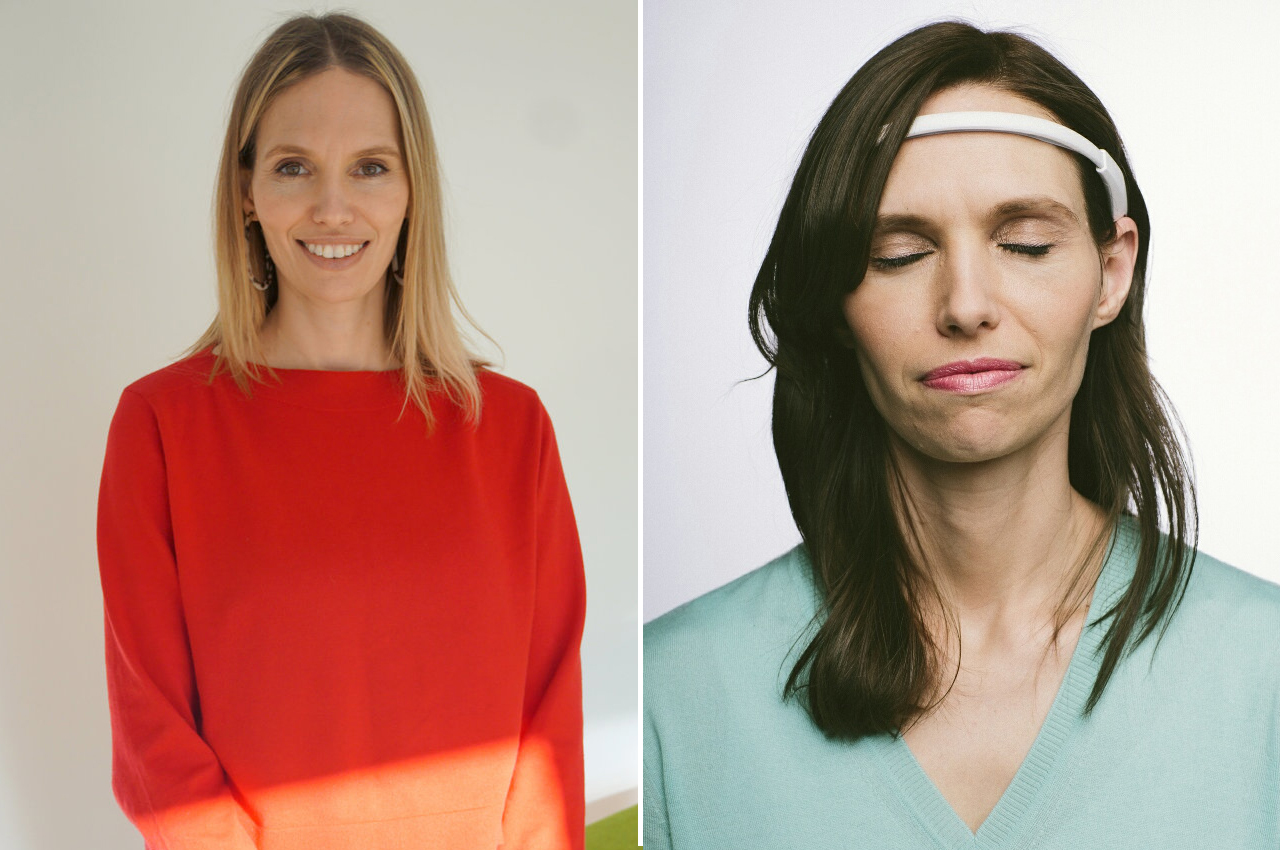
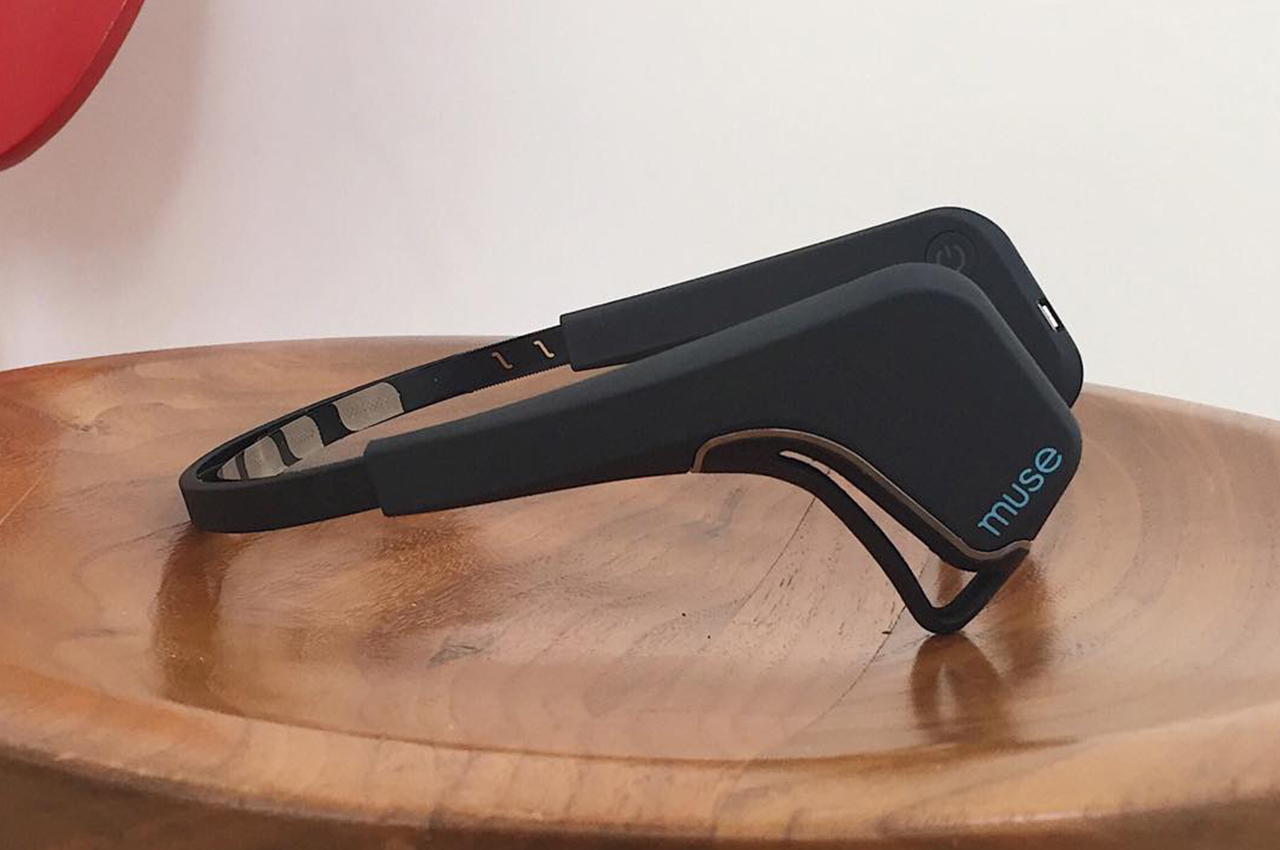
Morna Gamblin has 12 years of experience covering a design right from its research and concept development phase to its manufacturing. Taking this extensive experience, Morna now teaches eager students about the intricacies of Industrial Design through her Instagram and her Youtube channel. As she explains, “I started putting my learning out into the world because I see a lack of design research strategy being taught in ID schools. One of the most difficult aspects of being an industrial designer is that you could potentially design anything that is manufactured….and ANYTHING is a broad topic! ” One of the products designed by Morna is the Muse – a brainwave sensing headband that uses biofeedback sensors to provide a deep meditative experience.
What is your design philosophy and how is it reflected in your work?
My approach is oriented to be: Functional so that the design works, Friendly so that it’s inclusive and understandable, Attentive so that the needs of the end-user are addressed, Appropriate so that the solution is perfectly suited to the problem, and Beautiful so that it resonates emotionally with the end-user. I’ve worked on many projects that shape technology (new and old) into beautiful, functional, understandable, and manufacturable products. These tenets guide my approach, especially while juggling multiple needs from the client, their business, the end-user, and manufacturing.
Is there a social issue that you hope design can help solve?
Gender equality and inclusion in the workplace is an important issue for me. Recently, The Globe & Mail (Canadian newspaper) reported “men still hold the bulk of decision-making positions, and they continue to dramatically outnumber, outrank and outearn their female colleagues.” It’s a wicked problem: complex and nuanced. Design is well suited to address it because, unlike other disciplines which are problem-focused, design is solution-focused. As designers, we facilitate a process to imagine new futures. Last spring, I co-organized an event with Lindsay Malatesta for women (and non-binary) designers because we need to connect, share stories, and support each other.
Susan McKinney
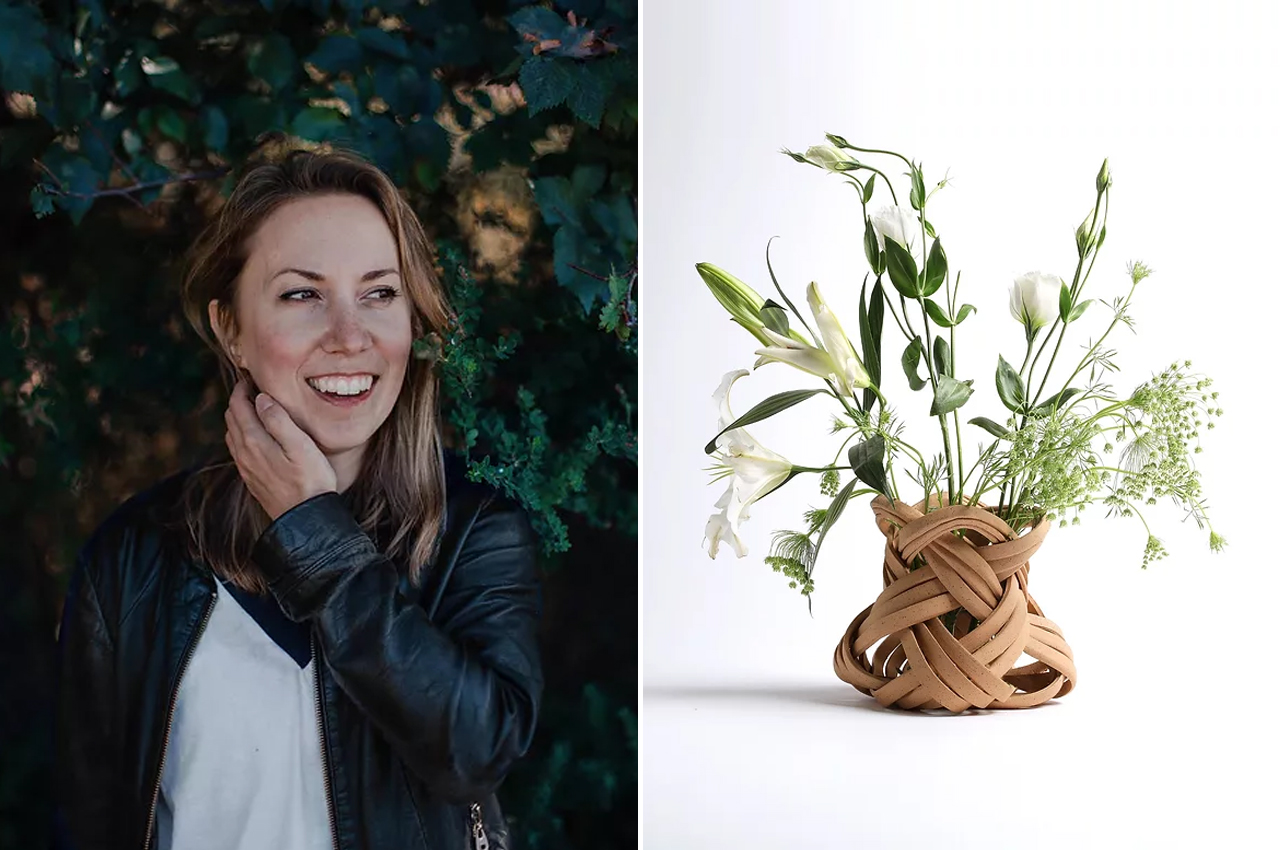
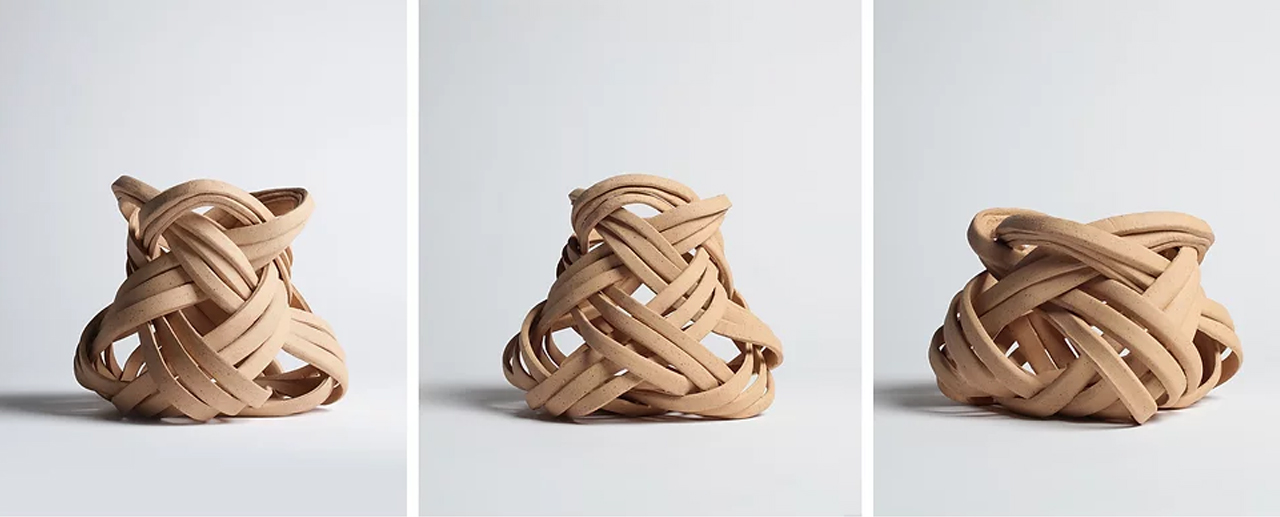
Susan McKinney is a ceramic artist and award-winning industrial + CMF designer; she was a design manager at New Deal Design prior to starting her own creative studio, SKINNY. Her design contributions over the past 12 years are notable, with honors from IDEA, Spark, FastCo Innovation by Design, and the National Design Award from her 7 years at New Deal Design, a renowned design agency in SF. Susan began exploring clay’s materiality in 2008, connecting her passion for inventive design with natural materials – as seen on the behind-the-scene images on her Instagram. Her use of clay pushes the material to go past its usual form as shown in her clay weaving called the Infinity Collection.
What is your design philosophy and how is it reflected in your work?
I’m constantly pushing the boundaries of what is possible, embracing radical ideas and processes. My work seeks to connect people to their own sense of wonder. By using materials in unexpected ways, like weaving clay, I create objects that go beyond our everyday experience, to bring moments of curiosity and magic to our daily lives.
Is there a social issue that you hope design can help solve?
As designers, we have a role to play in advocating for a positive and equitable human experience, at every level, while equally advocating for our planet.
Alejandra Castelao
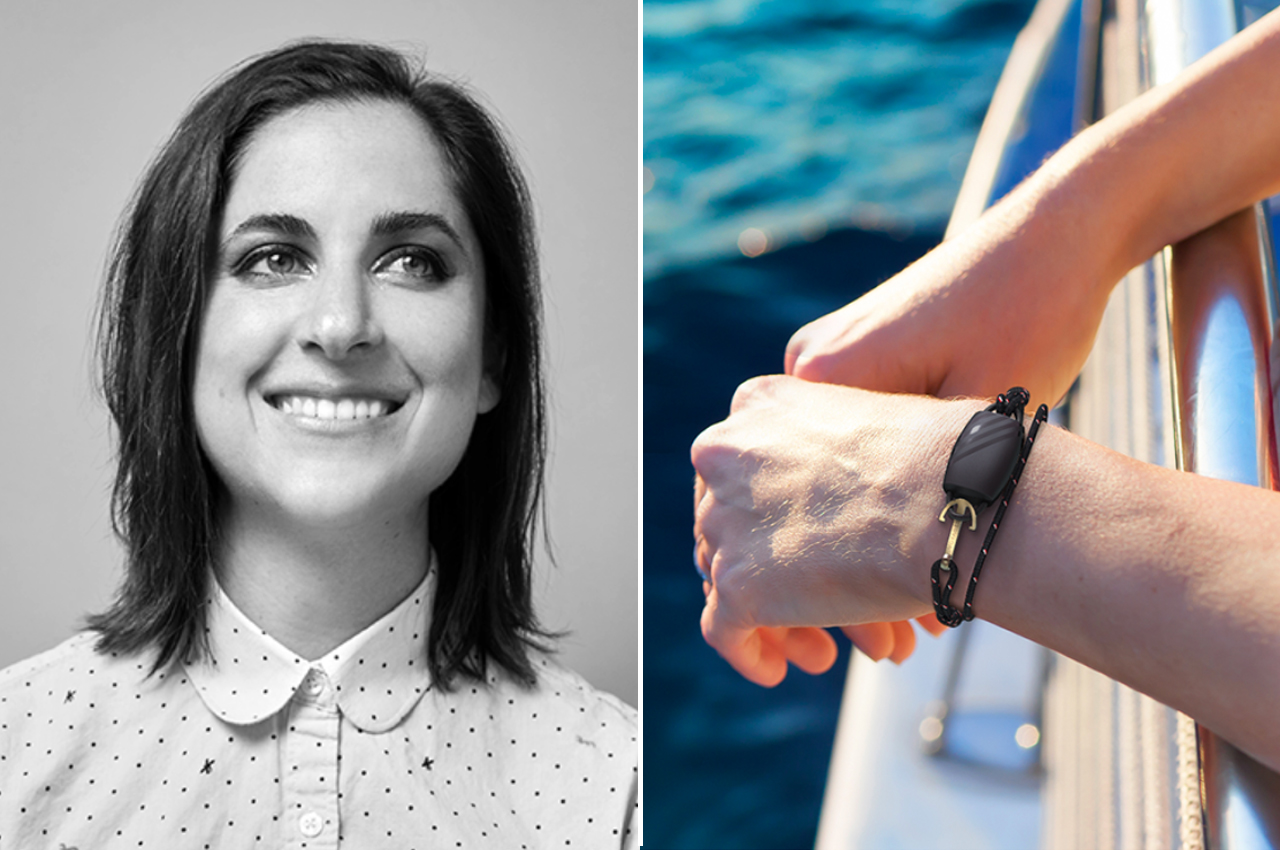
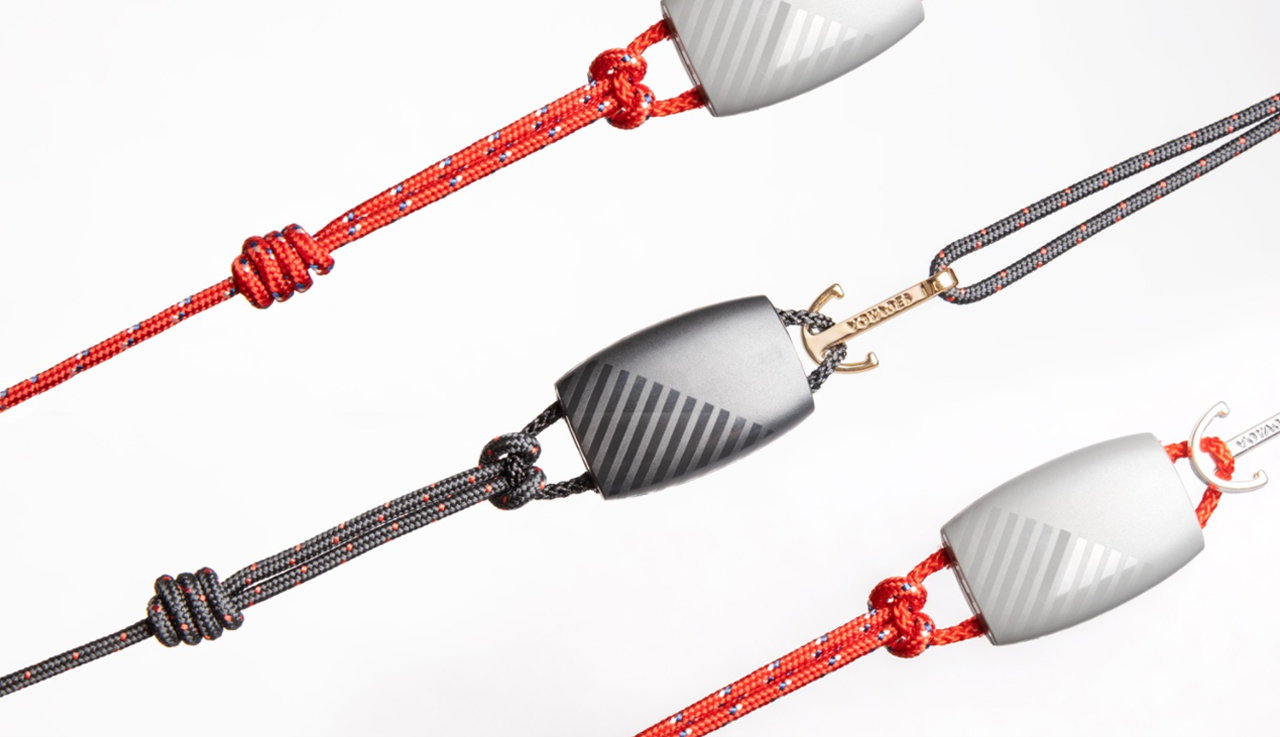
Alejandra Castelao is a senior industrial designer at Fjord, San Francisco. Alejandra works best at the intersection of the digital and physical realm and has over 10 years of experience working with multiple Fortune 500 companies. She also creates stunning human as well as insect forms sketched in VR, which you can see on her Instagram!
The product featured here is The Band – an original wearable design for Virgin Voyages’brand new cruise ships. The design is a solution that works across multiple environments – from lounging in a bikini, adventurous days out to a classy evening in cocktail dresses.
What is your design philosophy and how is it reflected in your work?
Not quite a philosophy per se but I believe we as designers are innate problem solvers. And our skillset sometimes involuntarily makes us jump into solutions right away, especially when we’re young and eager to make an impact. Now that I’ve been in the business of design for a while, I find myself assigning more focus, time, and importance to the definition of the problem itself. Defining the “why” something needs to be designed before figuring out the “what” it should look like is 90% of the battle if we are to ship products and experiences that will stand the test of time and won’t just satisfy fleeting needs.
Is there a social issue that you hope design can help solve?
I’ve been really interested in the healthcare space and how design can gain a seat at the table to help improve not just patient experiences but general wellness outcomes. Healthcare as a whole is an intricate and complicated challenge that is ripe for innovation in terms of how care is being delivered – even minor changes can have a direct impact on millions of lives. The current environment has finally opened the door for re-evaluation of incentives and outdated processes and institutions are a bit more open to change. I can’t wait to see what the future holds for the industry as we move toward more human-centered care models.
Kickie Chudikova
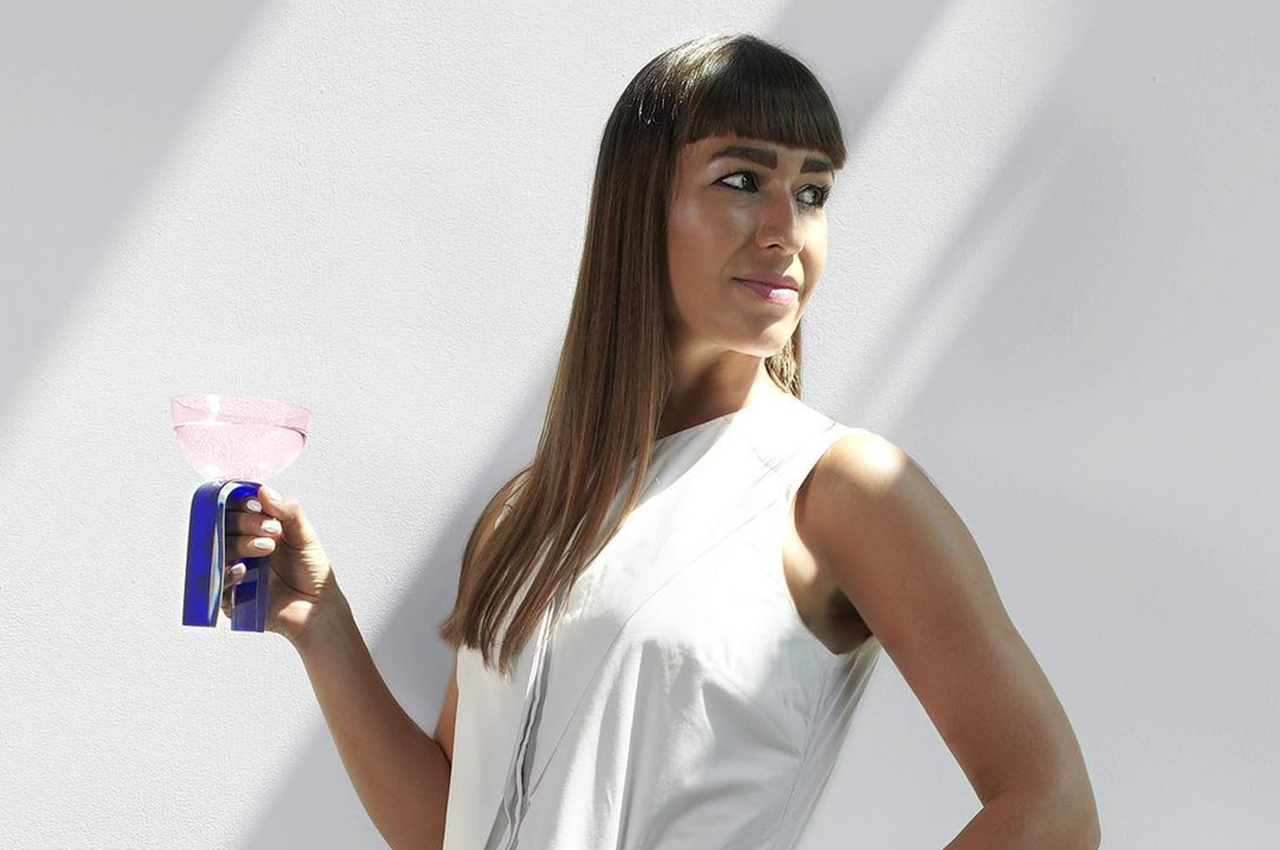
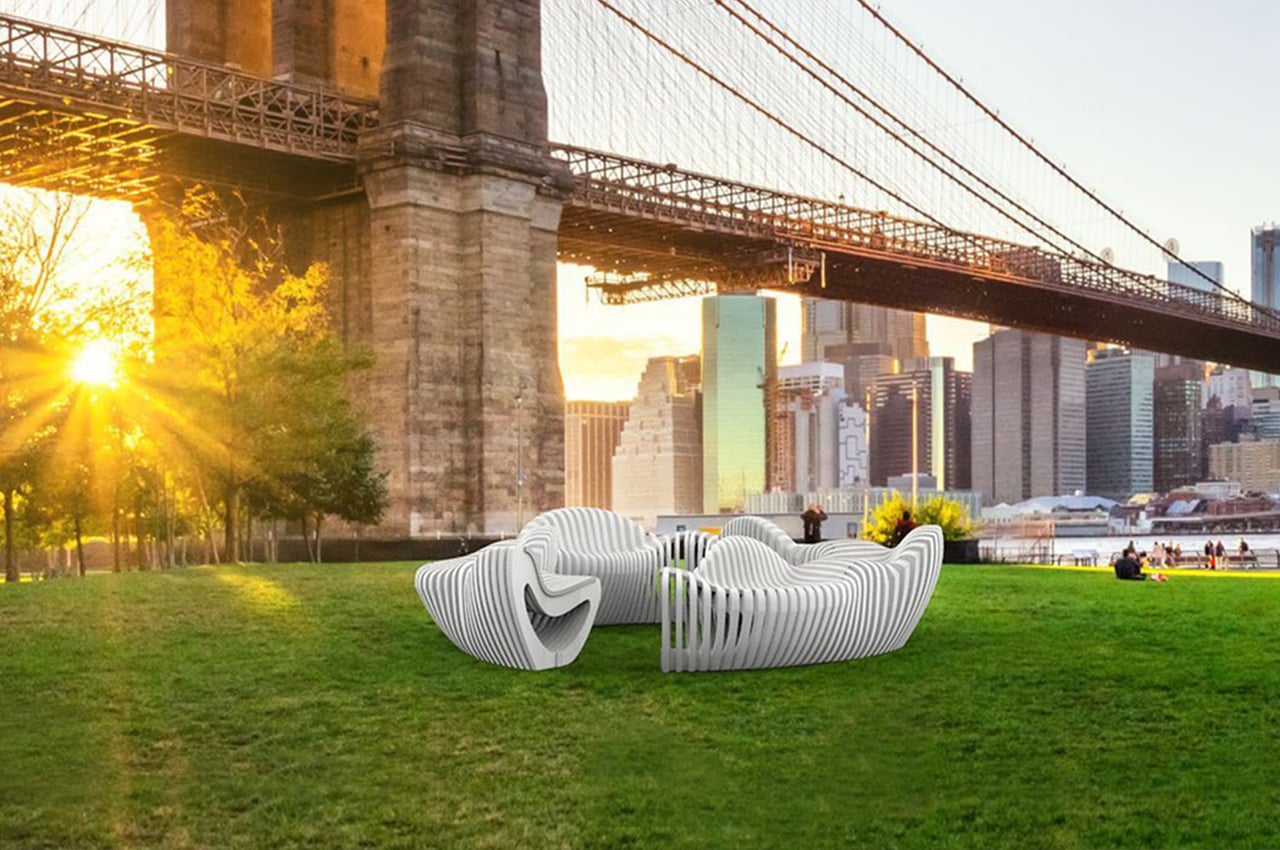
Kickie Chudikova’s approach to design is full of colour. Her work spans across a wide range – from products, objects, furniture to lighting. Her Instagram is full of colour palettes that attract your attention using a mix of raw materials, different textures, and patterns. Kickie’s eye for detail shines with her bold, aesthetically pleasing designs which are designed to last – each product is made to be kept, valued, and appreciated. Featured here is the Spiral of Life, a public installation that draws inspiration from the waves of the Hudson River and the sculptures of Isamu Noguchi. It offers a space to sit, relax, contemplate, and take a break from the hectic city routine.
What is your design philosophy and how is it reflected in your work?
I believe in well-designed products. That means products have to function, look beautiful, trigger an emotion all while using environmentally friendly materials, innovative production techniques and live within a circular system. This is the way to sustainability since products like these are the ones we keep and pass on to the next generations. I am striving to create new icons, designing products that spark joy. Living with less but better. Color is a big passion of mine and I really like to use it in my work.
Is there a social issue that you hope design can help solve?
One of the issues I deeply care about is waste management and its global impact and effects on human health and the health of our planet.
I am convinced design could be used as one of the tools to help with the trash and material recycling crisis we are facing. Therefore I carefully select materials I use in my designs and focus on the lifecycle of the product. Whether it means longevity, recycling, or up-cycling.
I am witnessing this pressing issue daily, since living in New York where only 17% of garbage gets recycled. The United States accounts for only about 4 percent of the world’s population yet generates 12 percent of the planet’s garbage. These numbers are mortifying, as Americans create 3 times more trash than India or China.
We need a systematic change, change in peoples thinking, approach and behavior. Sustainable design, repurposing, reusing, repairing rather than throwing away. Small steps can go a long way!
Carol Gay
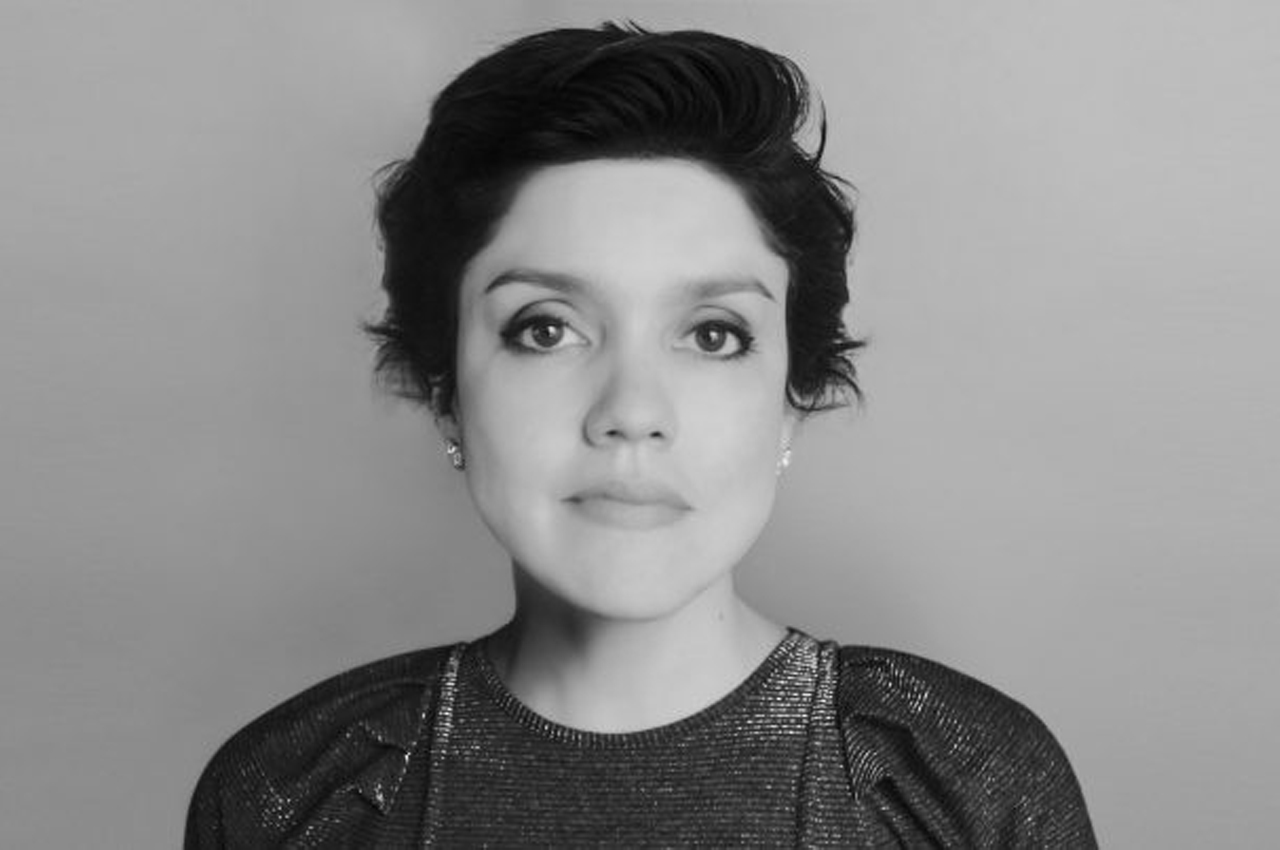
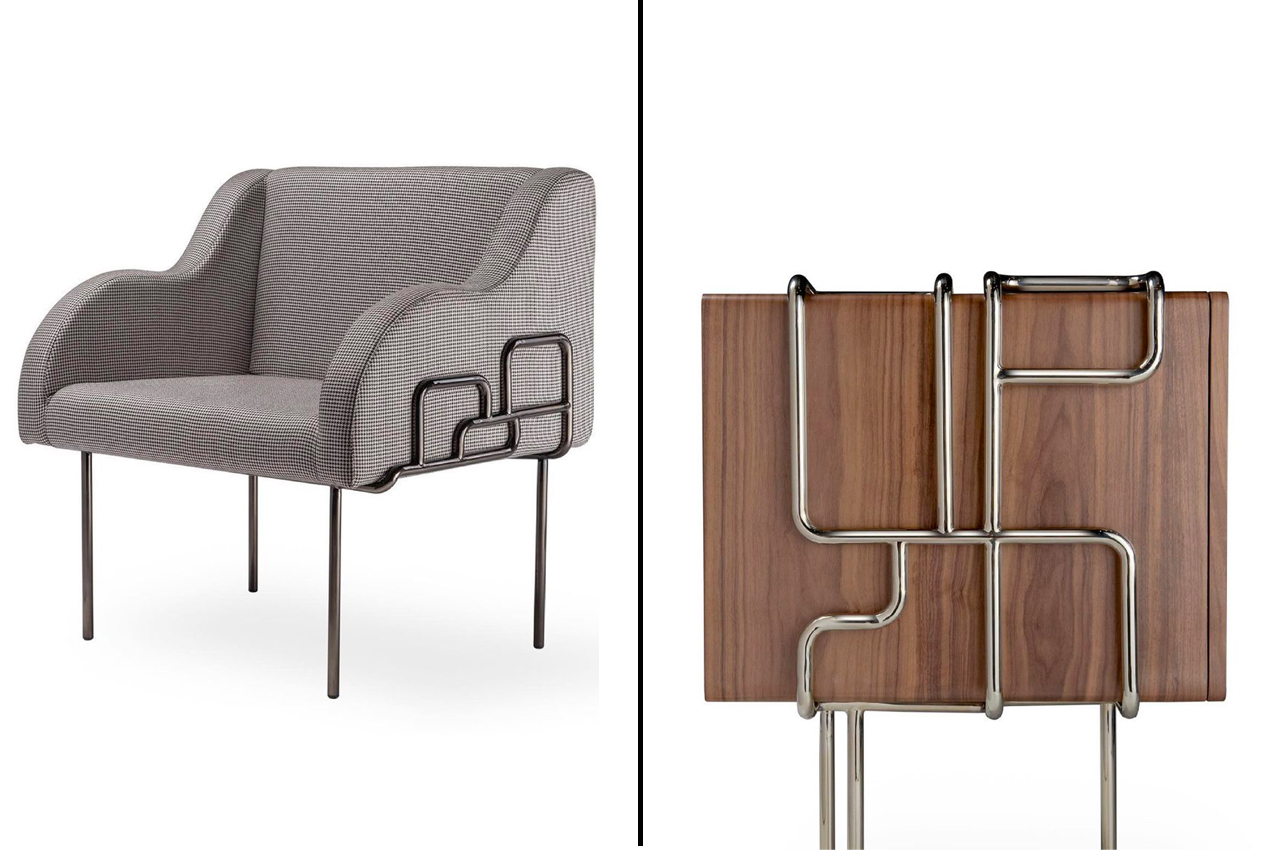
Brazilian designer Carol Gay was originally trained in architecture, but later transitioned to furniture design. She has been nominated for multiple awards, including the XXI TOP Design Award Brazil created by the magazine Arc Design ranking among the three finalists in the lighting category. Her Instagram shows her love of experimenting with materials – be it mixing rocks with glass, or fusing metal to create a geometric base that holds up her furniture design. The molded pipes almost look like paper clips and add a quirky touch to the classic and elegant furniture designs.
What is your design philosophy and how is it reflected in your work?
In 1999, I attended the ‘Construction of Objects’ workshop, given by the designers Fernando and Humberto Campana. I consider this experience as the genesis of my current work.
Throughout the workshop, I was able to reflect upon many questions besides aesthetics, acquiring a keener eye for the world of product design, within a sustainable view, and finally reaching a personal expression.
Is there a social issue that you hope design can help solve?
A hands-on experience, performing constant artisanal skills, and the permanent search for new materials have become essential features of my design. Design is an important tool for many solutions and one of them is social. Design can transform poor communities and thus empower people by developing and sophisticating their skills. Valuing manual knowledge and awakening new paths. Working with artisans values ancestral knowledge and allows continuity through generations.
Elodie Delassus
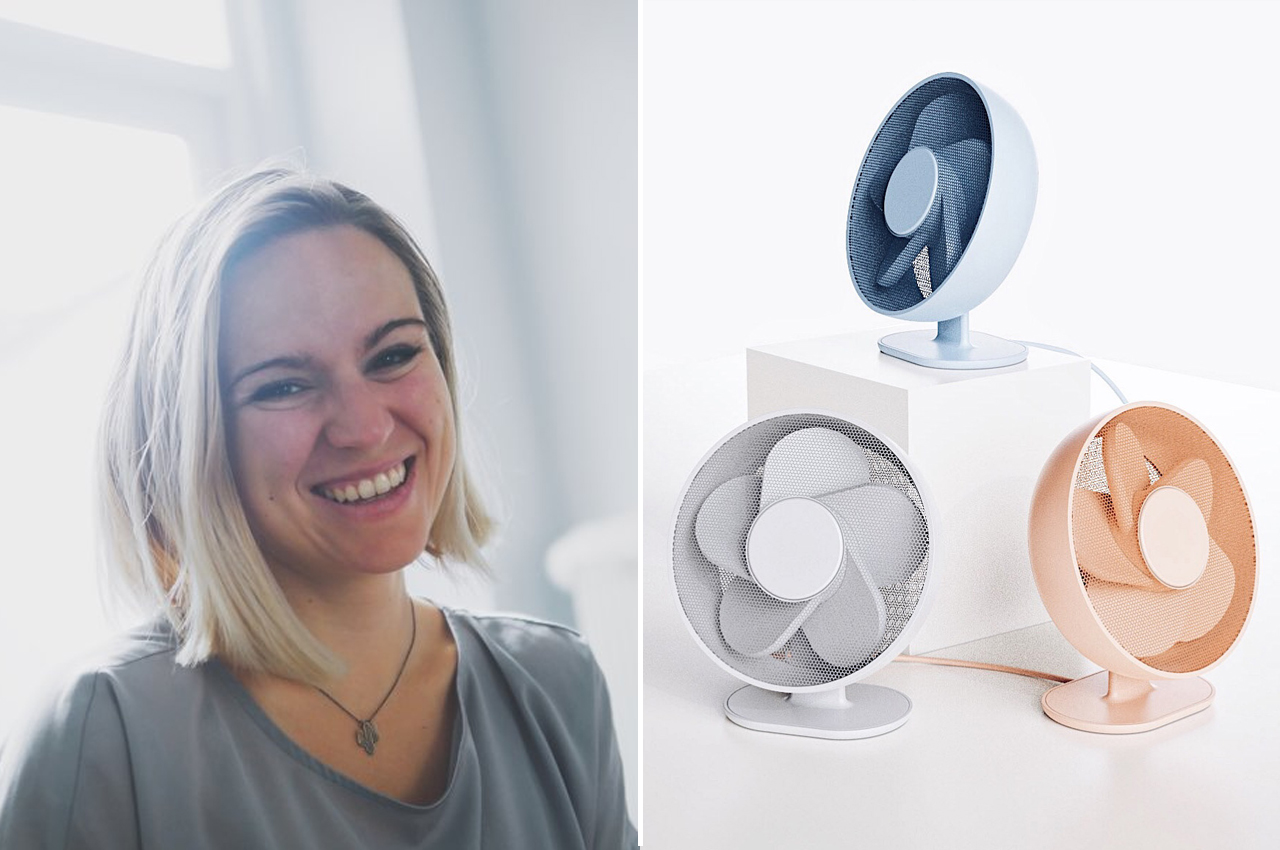
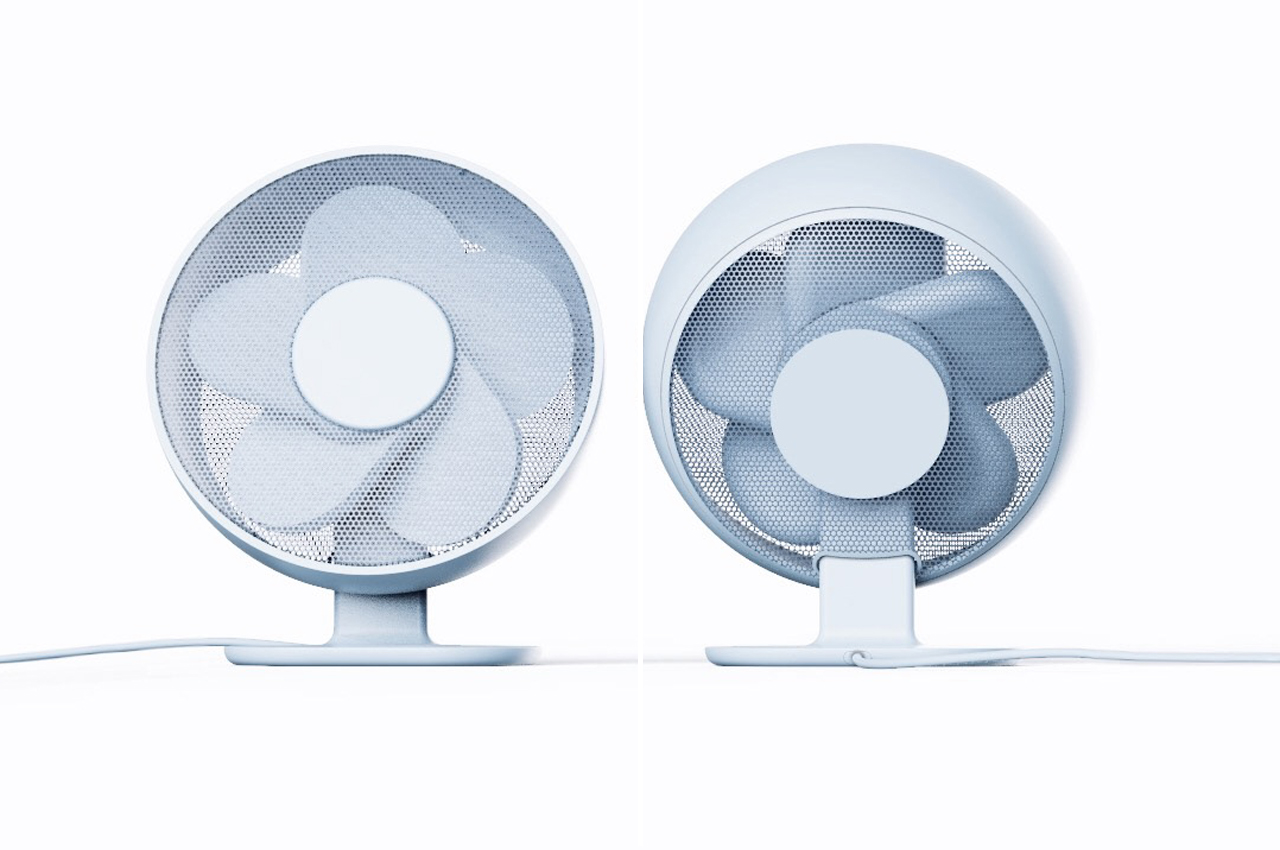
Elodie Delassus describes her design approach as a people-centric Industrial, Strategic, and Experience designer. As she puts it,” I believe in uncovering opportunities to make lives better, solving challenges. I don’t get stopped by the tools and methodologies I know to rethink topics and challenges. Most of the time, many tools end up blooming along with a project.” With multiple iF Product Design Awards under her belt, Elodie loves working with multi-disciplinary teams to create a great design. You can check out her work process on her Instagram page, which is filled with interesting product ideation and sketches! The design here is LeVentilo, a soft and approachable fan that uses a metal perforated sheet to show the blades while removing the fear of hurting your fingers!
What is your design philosophy and how is it reflected in your work?
I always try to use reasoning to guide design choices, challenging my decisions with “what if” scenarios to understand the impact of each element. I ask myself if one part of the design were changed, would that improve the use, experience, manufacturability, affordability, or reparability? It is important to me to understand each and every design detail and decision that I made for my design. Design is about conscious choices, not a coincidence.
Is there a social issue that you hope design can help solve?
Accessibility for all is a topic that I keep front of mind in every new project I work on. Designing for the most extreme cases often also benefits the broader audience. The “curb-cut effect” is an example of this; curb-cuts are required to make sidewalks accessible for wheelchair users, but also benefit users of bicycles, strollers, and more. Sustainability is sharing the podium as another issue I am passionate about – it is such a critical need for designers to consider at the earliest stages of the creative process!
Monika Mulder
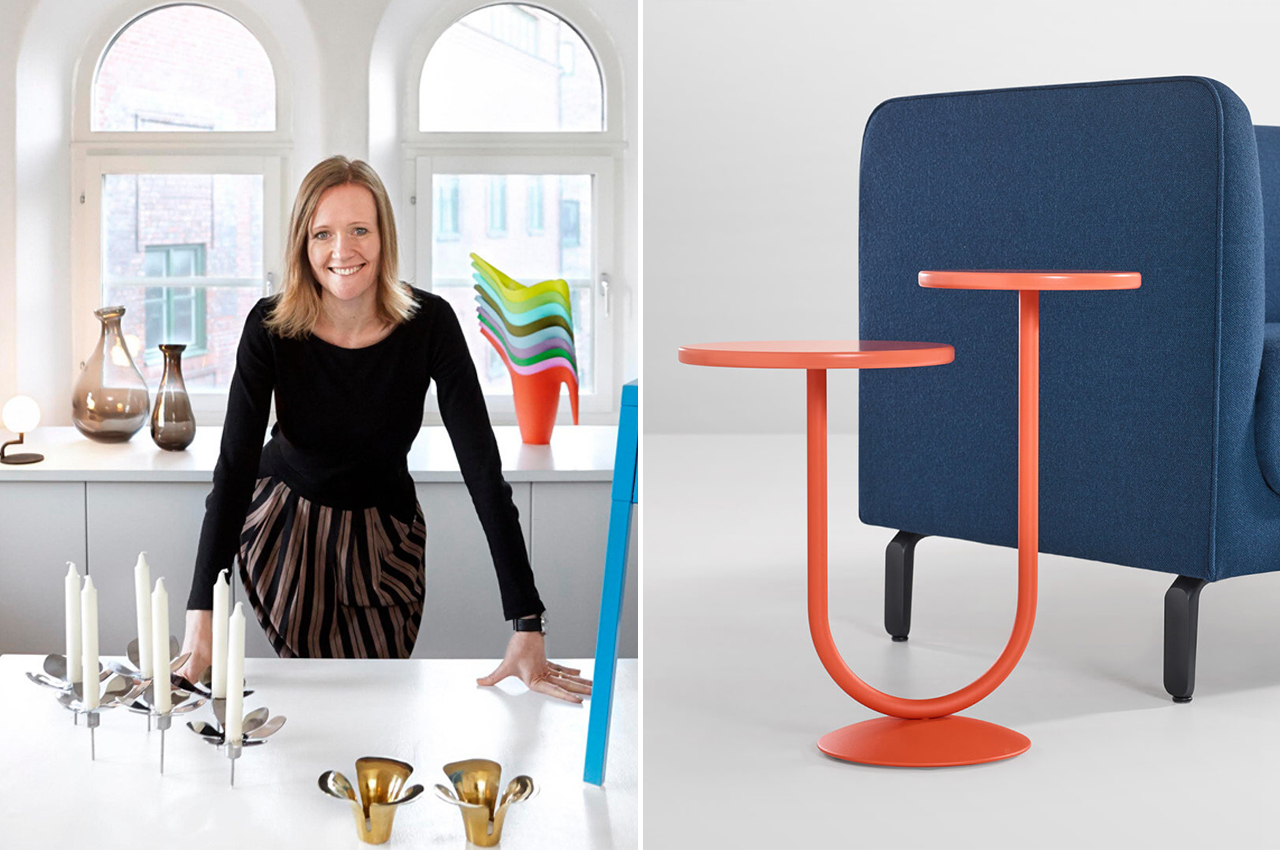
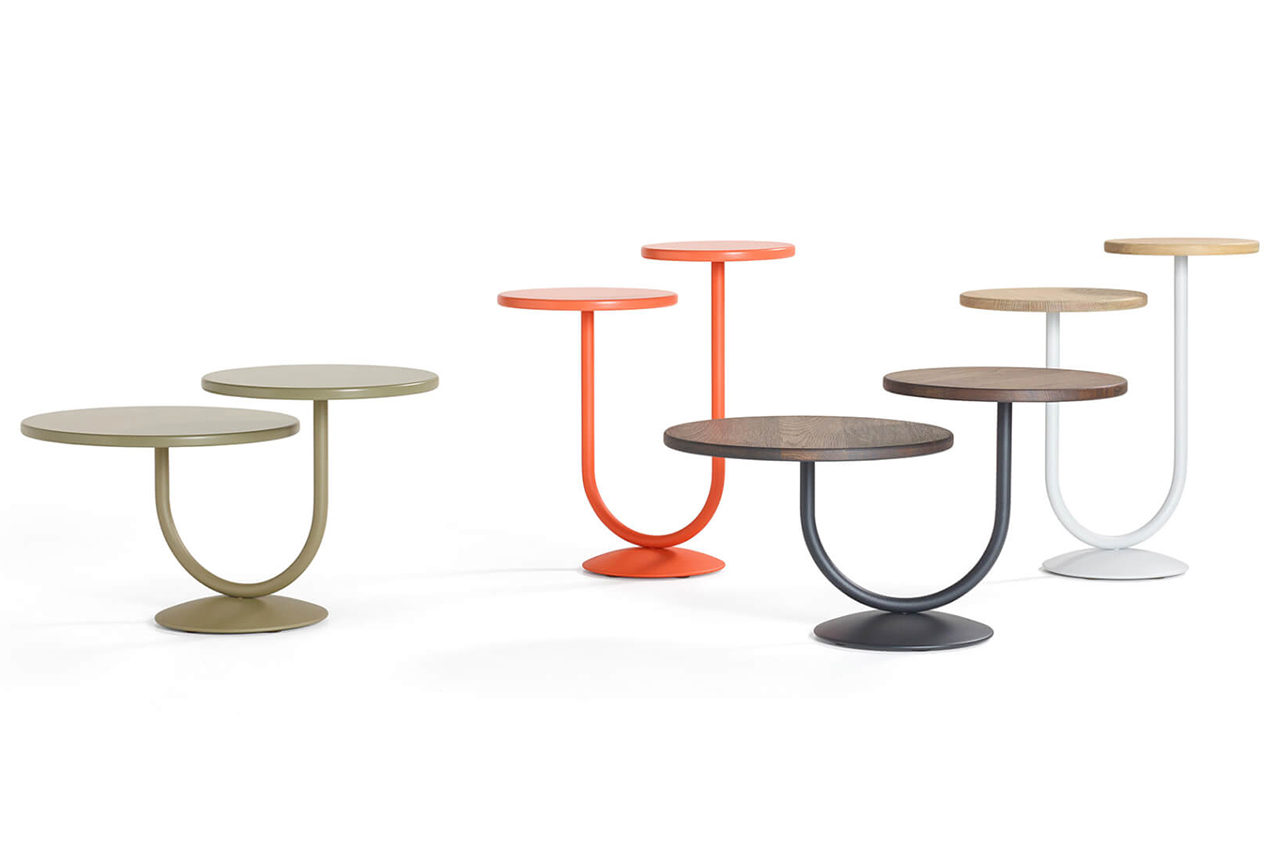
Originally from the Netherlands, Monika runs her own design studio in Sweden, and has worked for brands such as Materia, Tenzo, and IKEA. Her pieces range from minimal and sophisticated to whimsical and playful and her Instagram is her showcase of her work-in-progress as well as her daily life. Called the Twins, this side table by Monika Mulder truly does look like a pair of twins! The intriguingly looped furniture piece features two tabletops, connected via a U-shaped pipe. It also comes in varying heights.
What is your design philosophy and how is it reflected in your work?
I work with emotion, function, and innovation. I like to challenge myself to create concepts that are meaningful for at least one of these three reasons. Many times, I think of people when I find inspiration for my projects. Their challenges and dreams make me eager to find relevant solutions and trigger my imagination. I use the form, material, and color to add emotion, which is an important asset to achieve affection for the design. Adding identity also makes me more innovative since it often requires a new way of thinking to get what I have in mind.
Is there a social issue that you hope design can help solve?
In the past two years, one topic has risen to the top of my agenda. Climate change has made me extremely aware of the necessity to adjust the way we design and produce. Design and Quality have got a new purpose. I see it as my obligation to take responsibility as a designer and I take every opportunity to raise critical questions to myself and my clients. I have noticed that it does make a difference, and together with my clients, we are making steps in the right direction.
About the Author
The post Female Industrial Designers you must follow to see the impact they are making with their designs! first appeared on Yanko Design.






